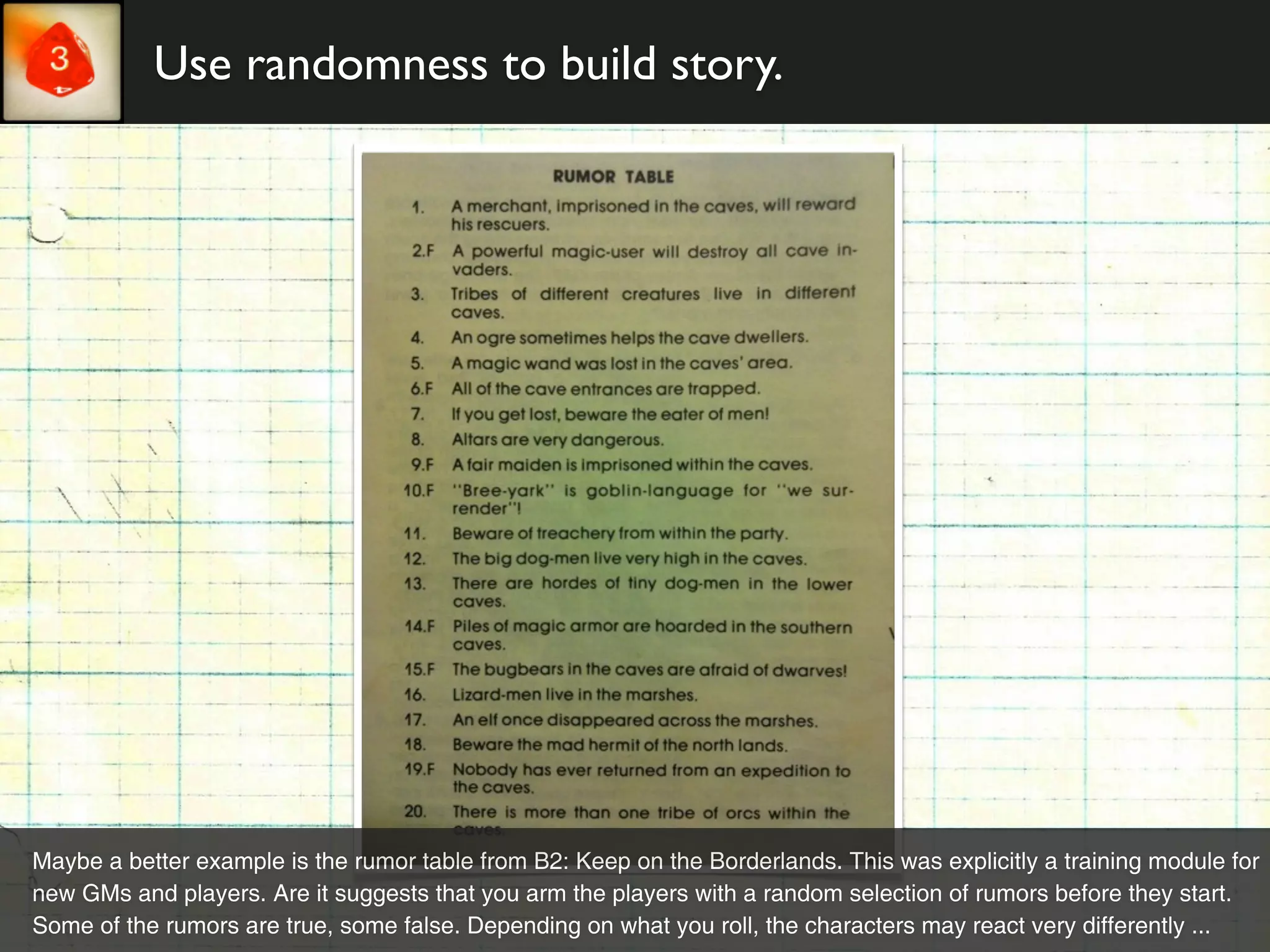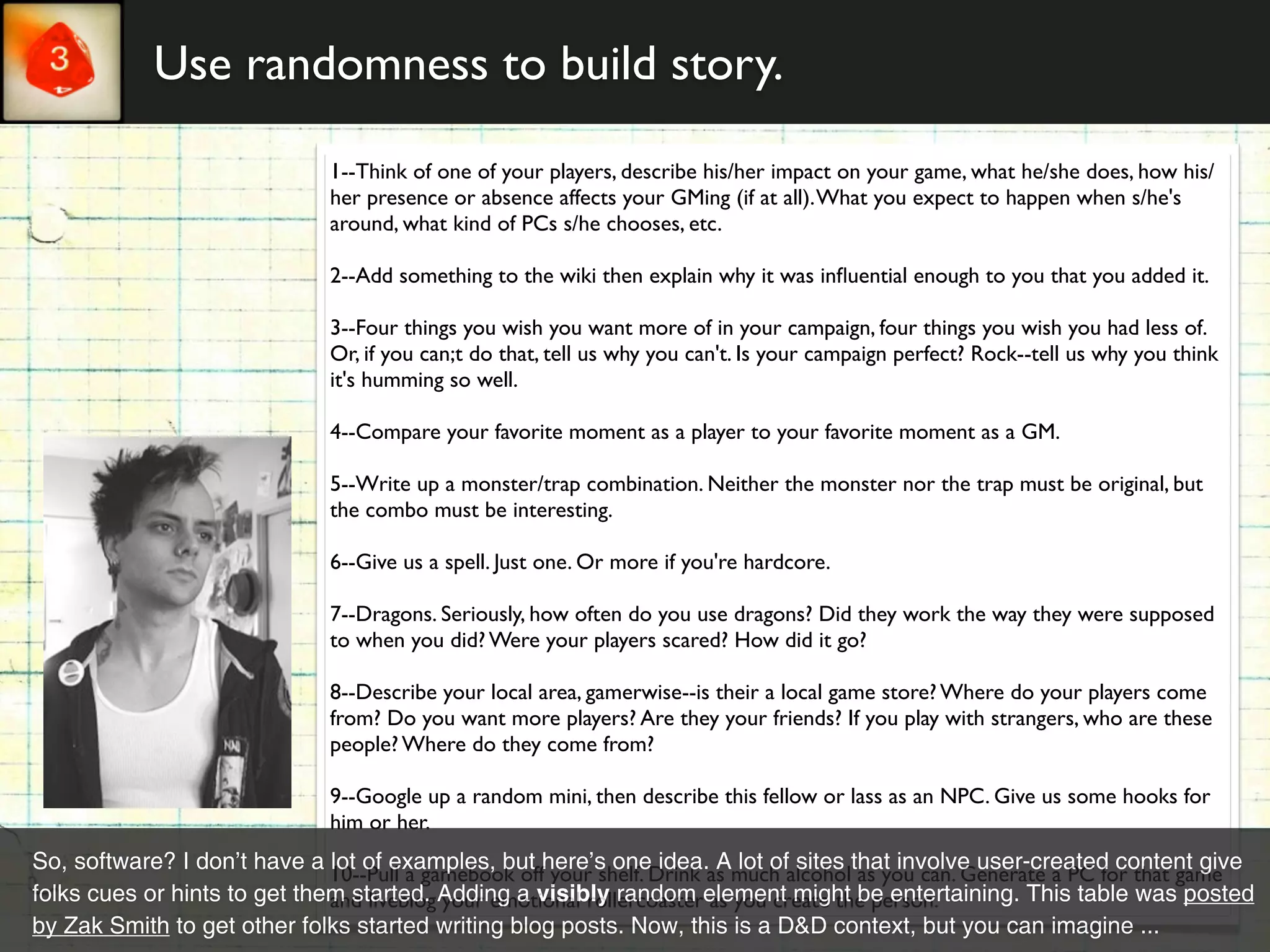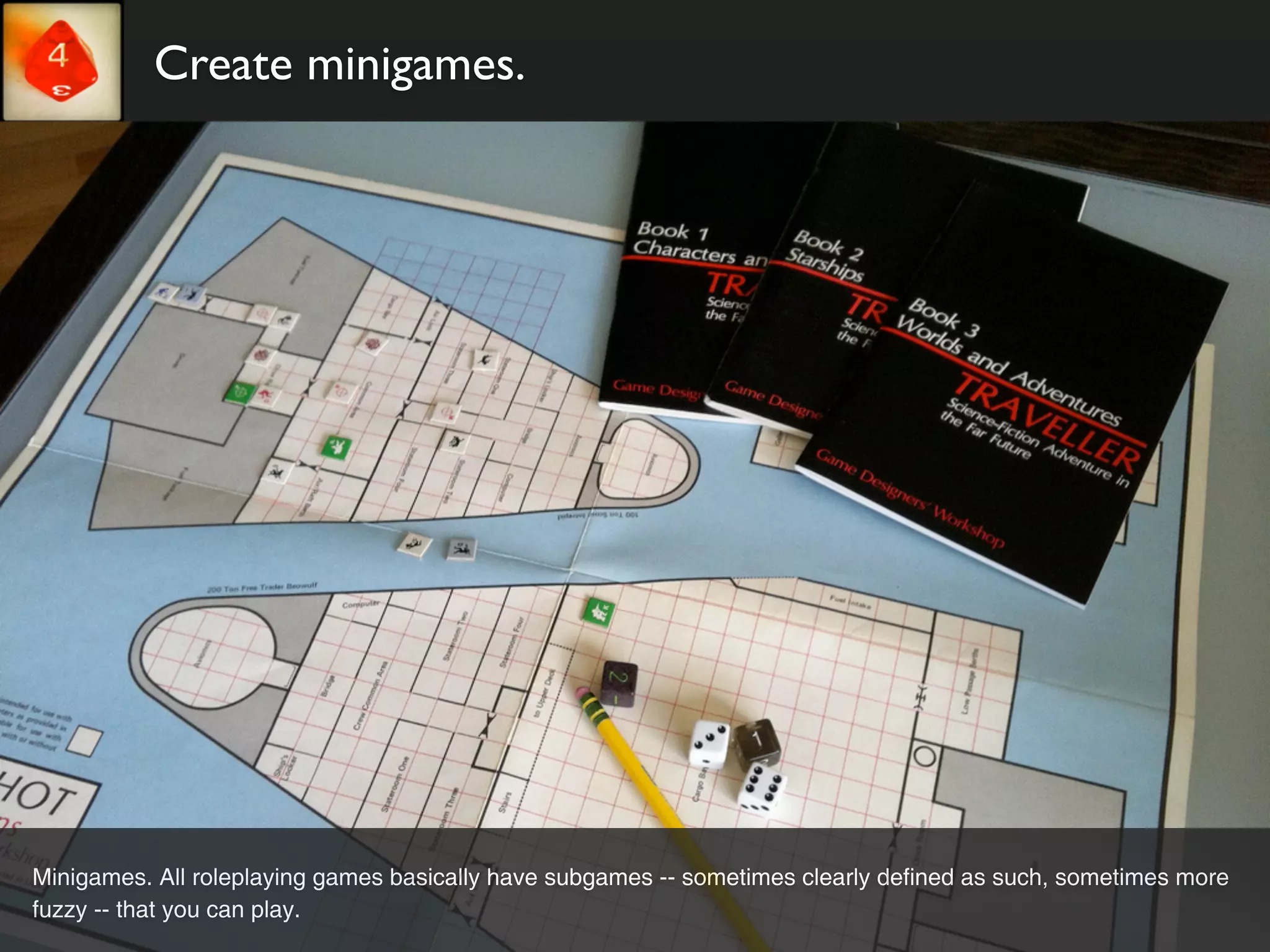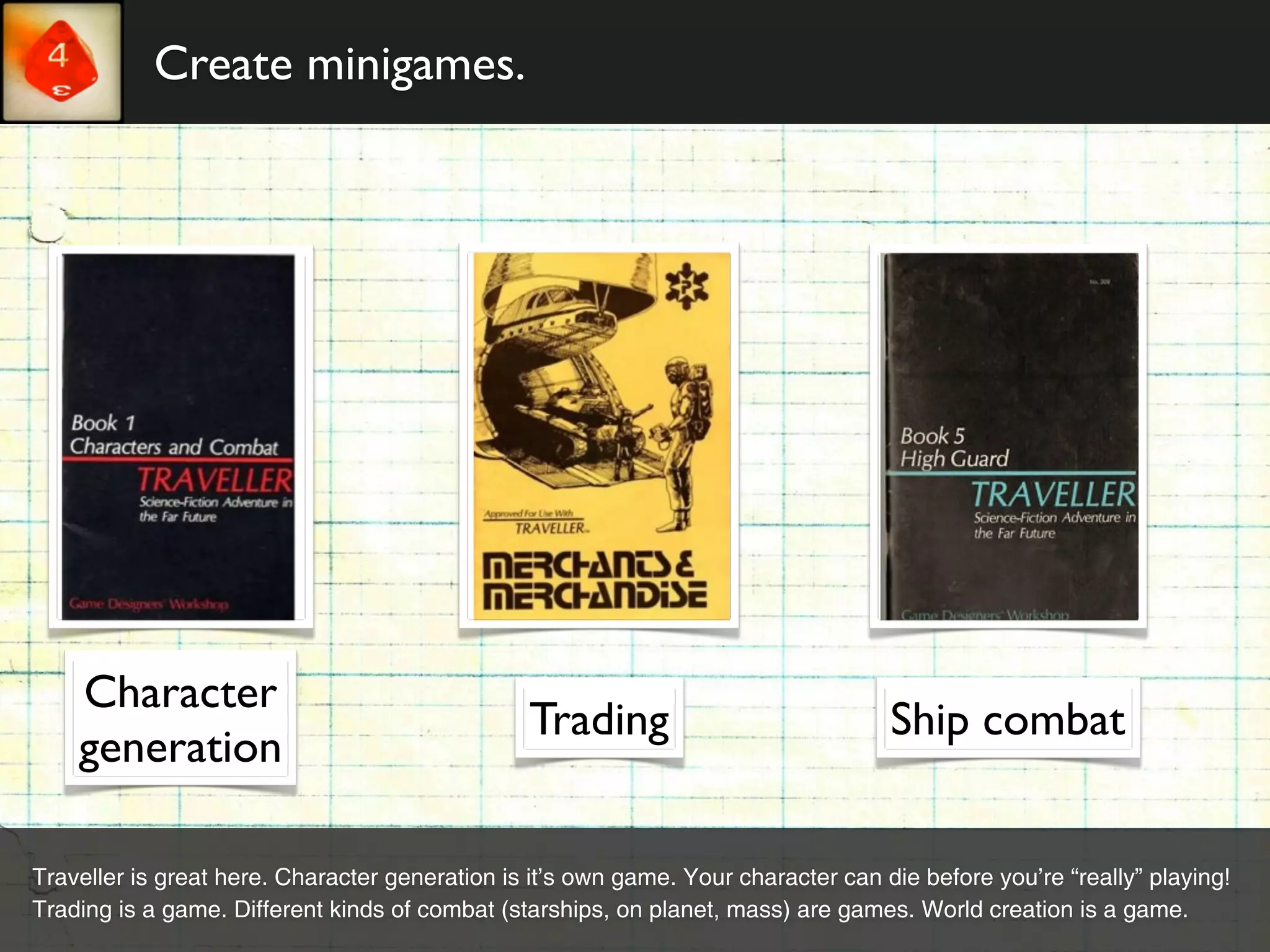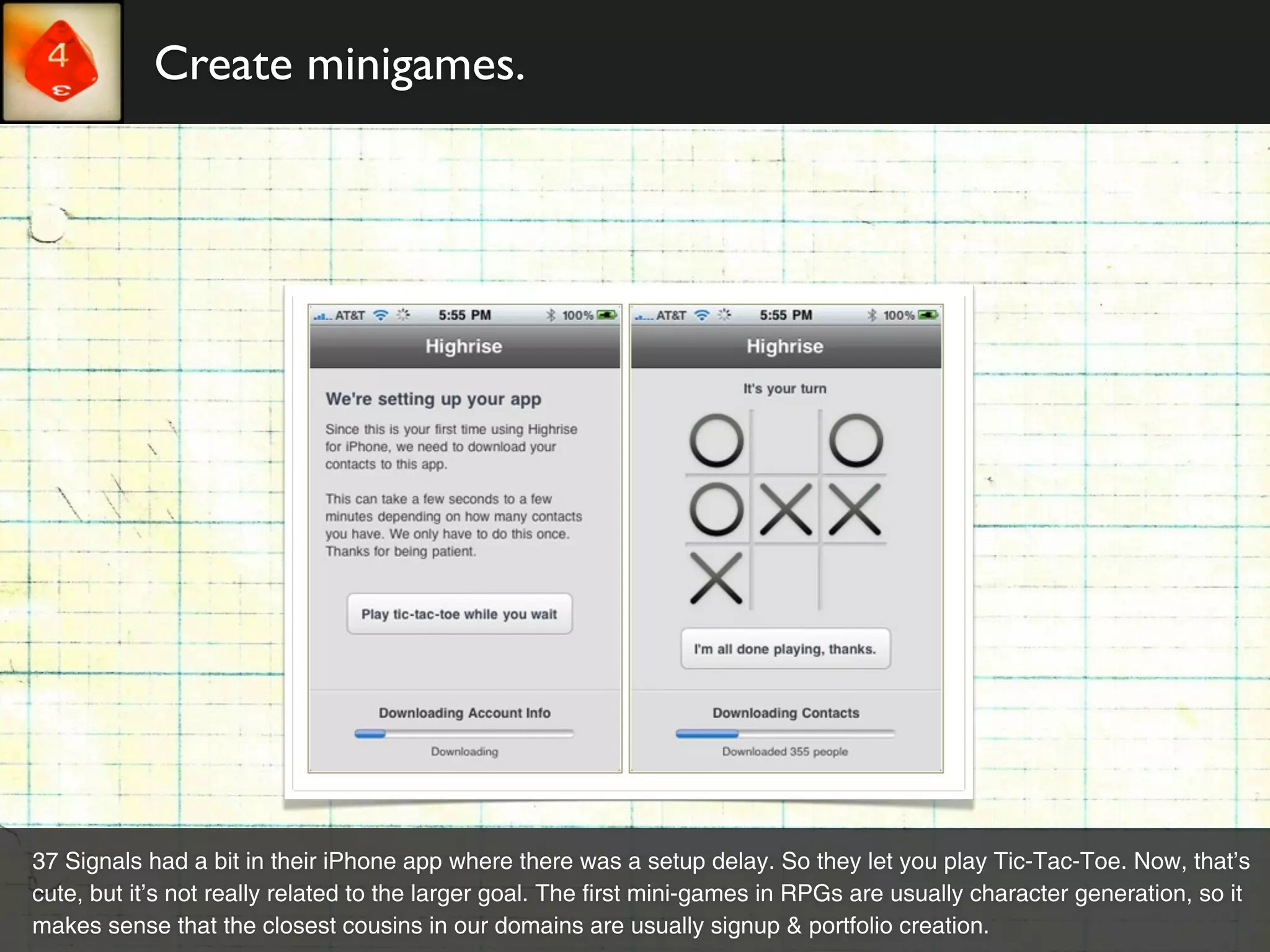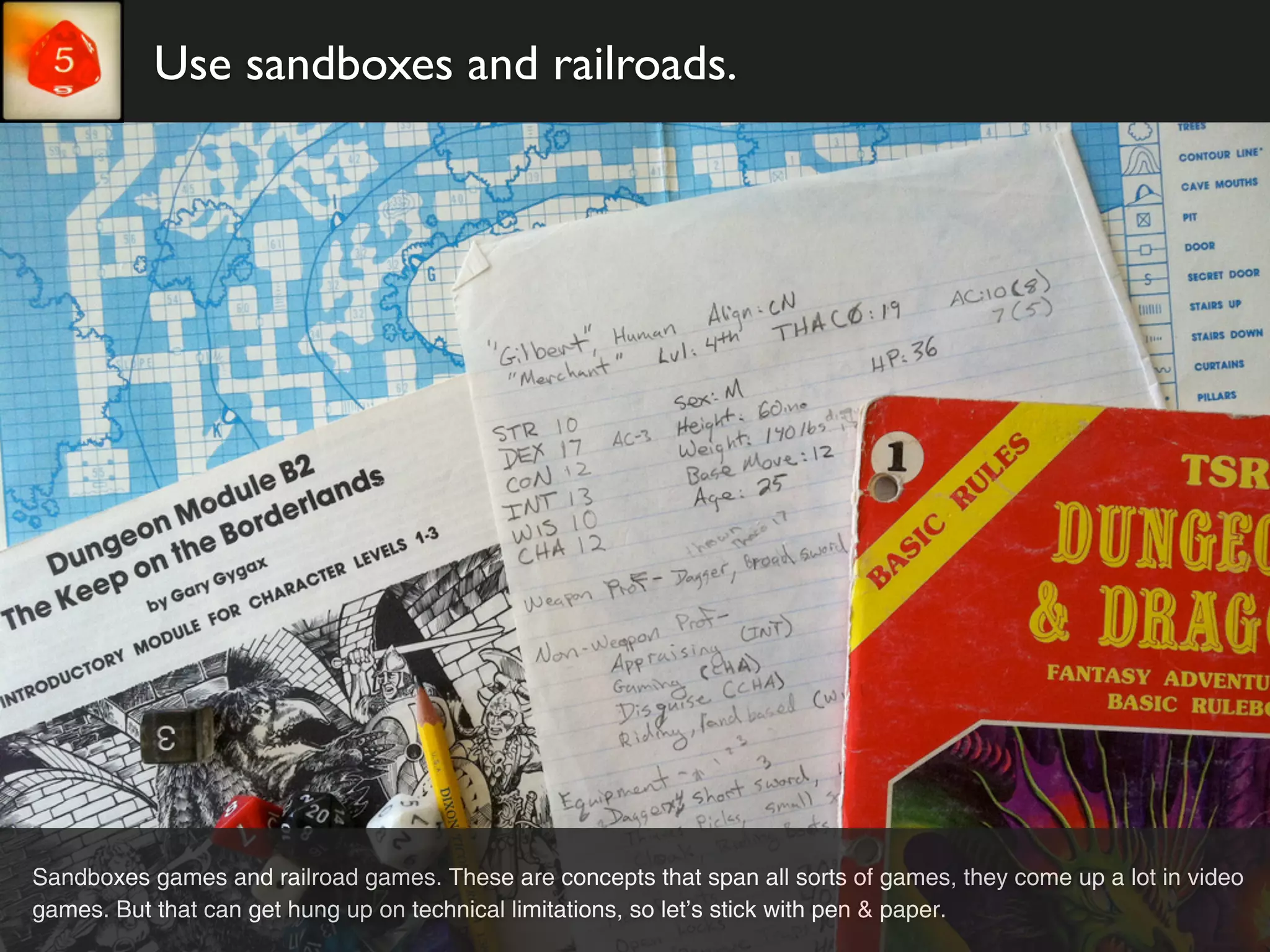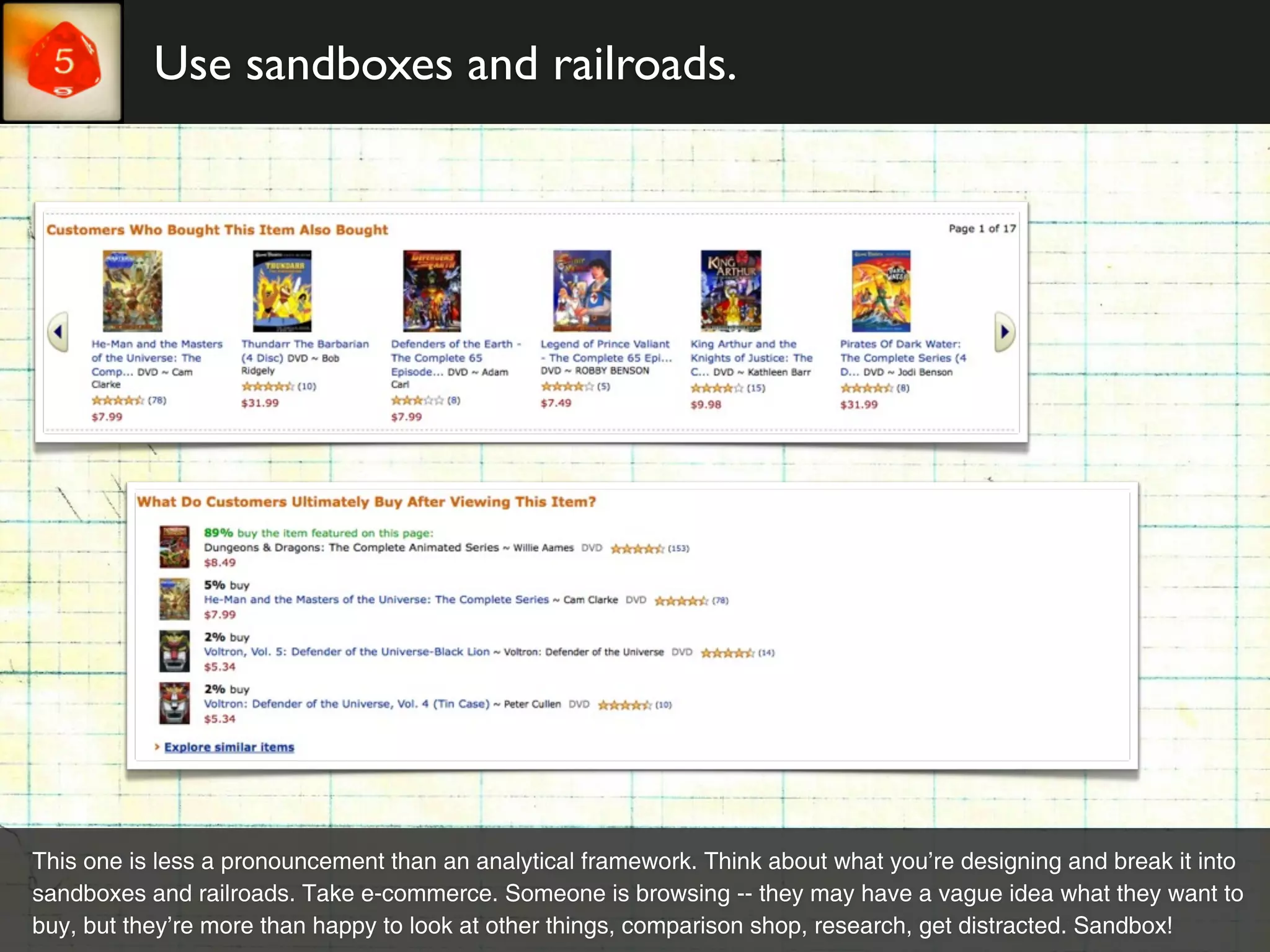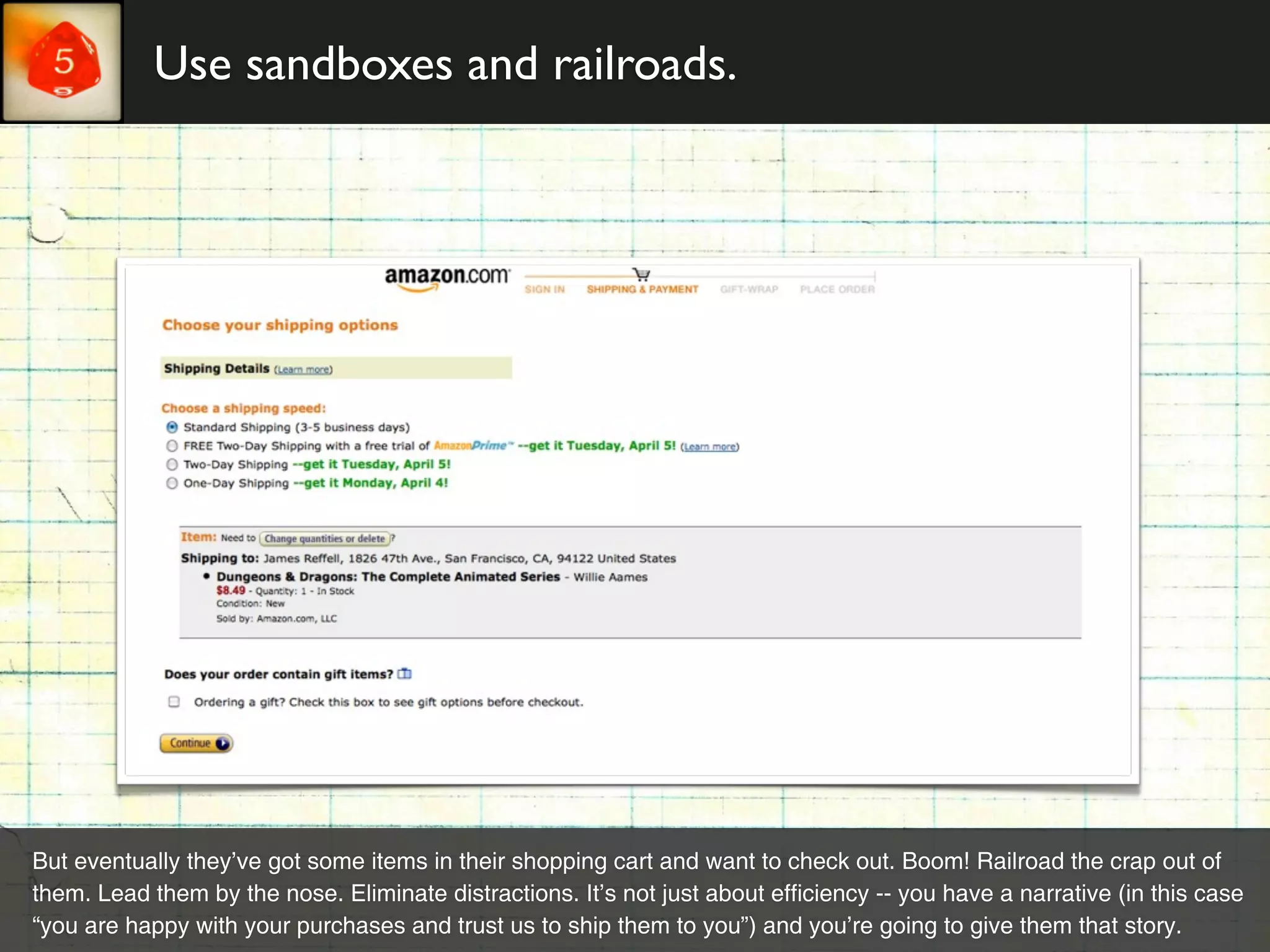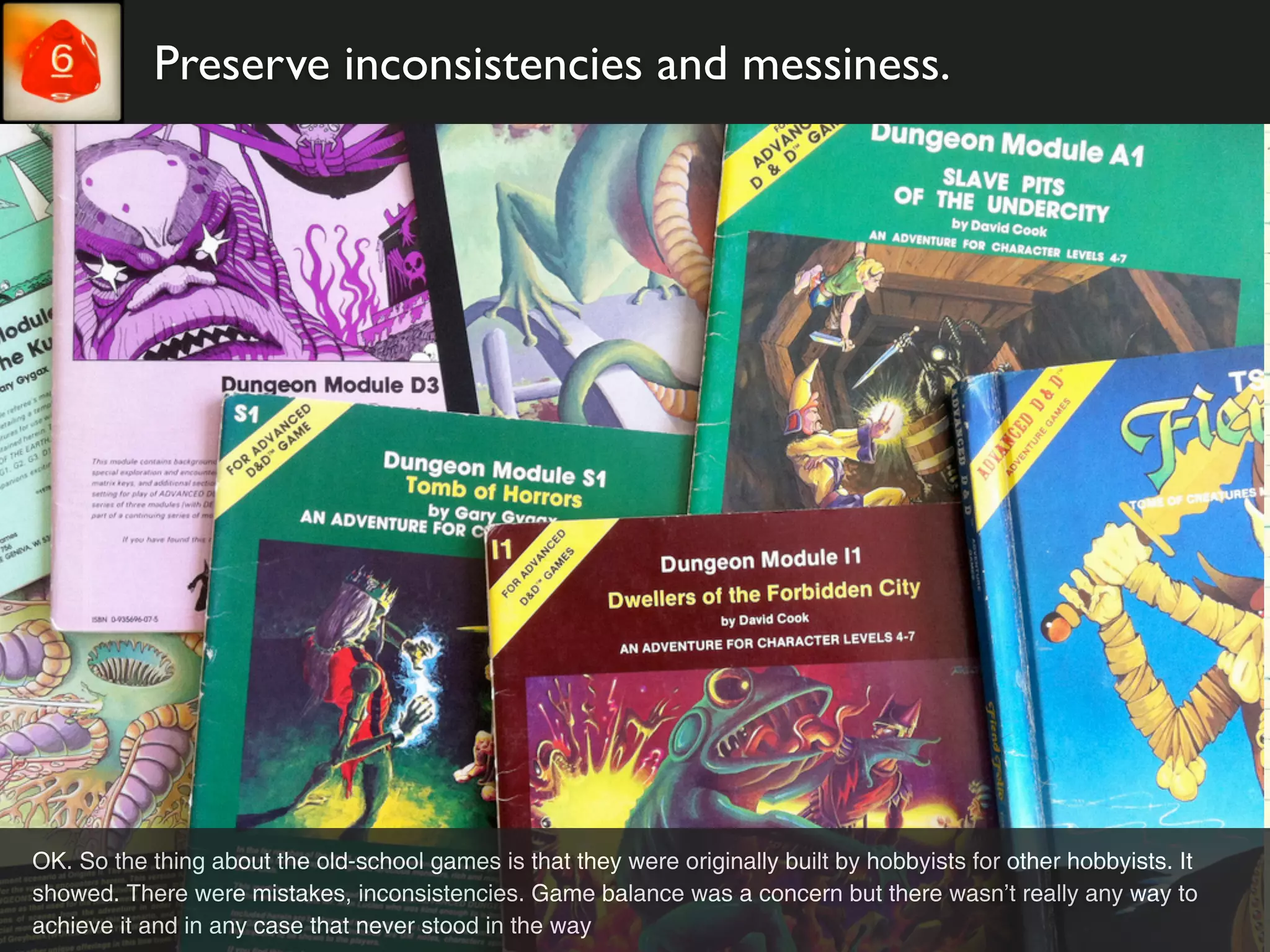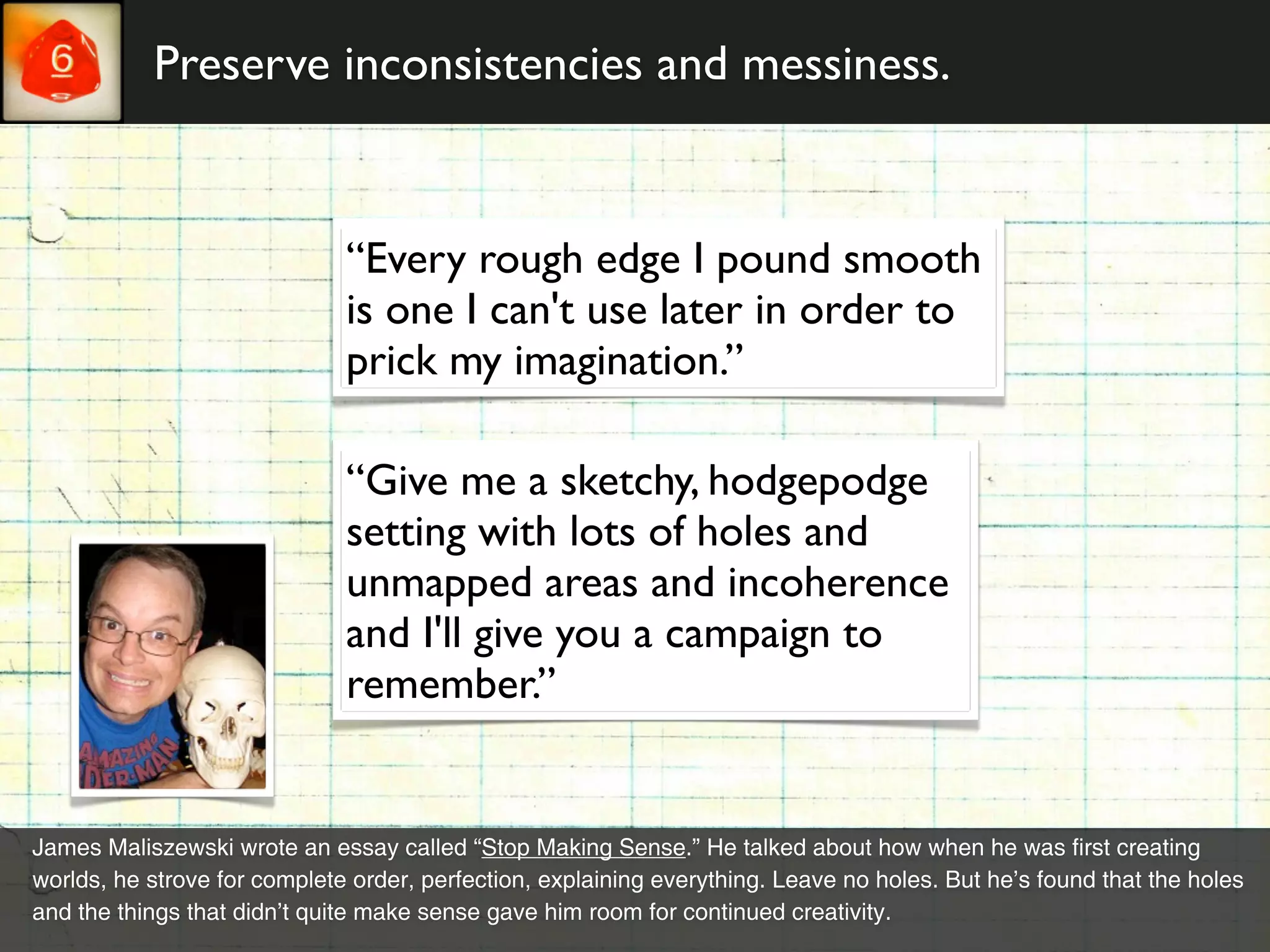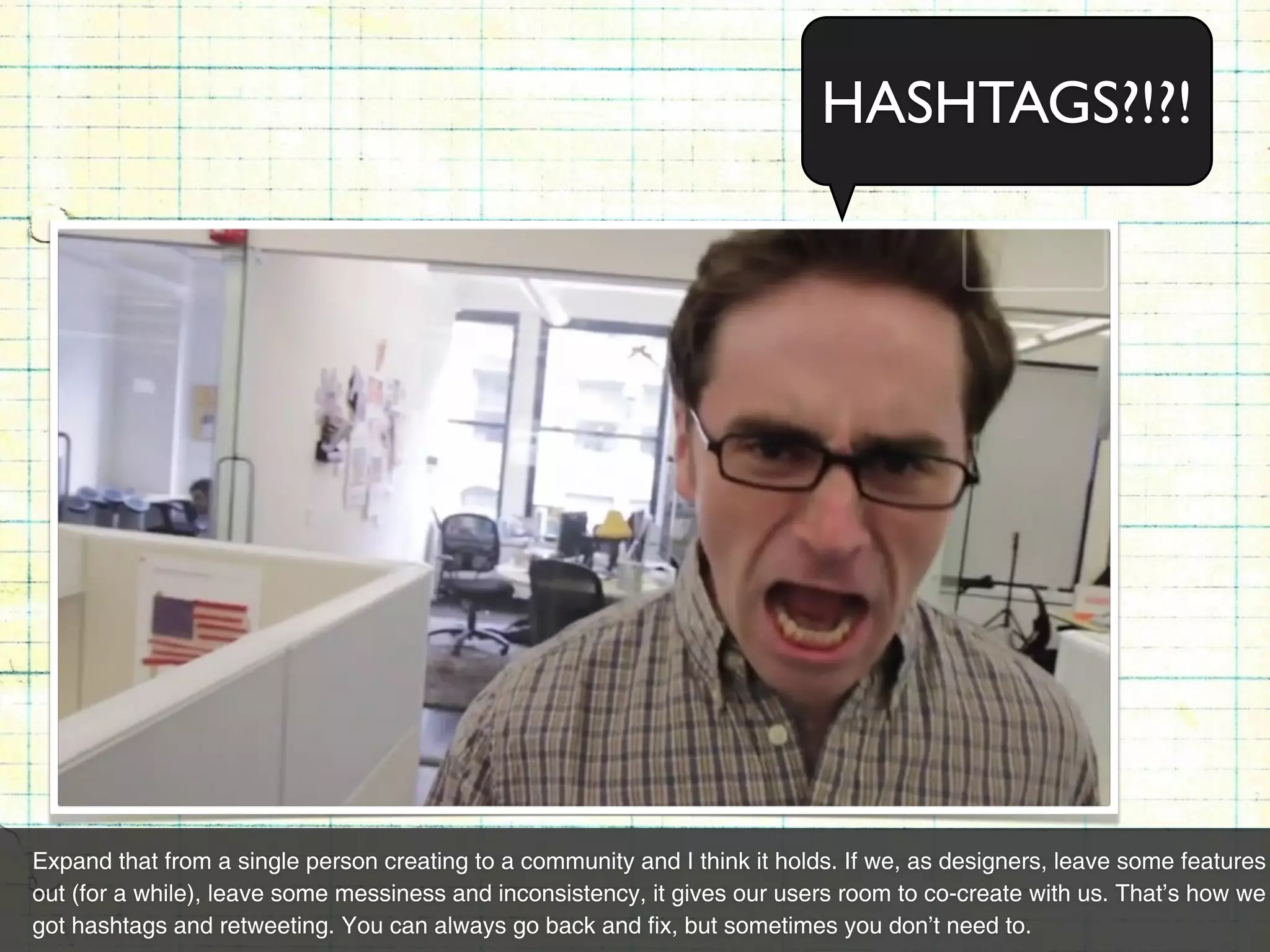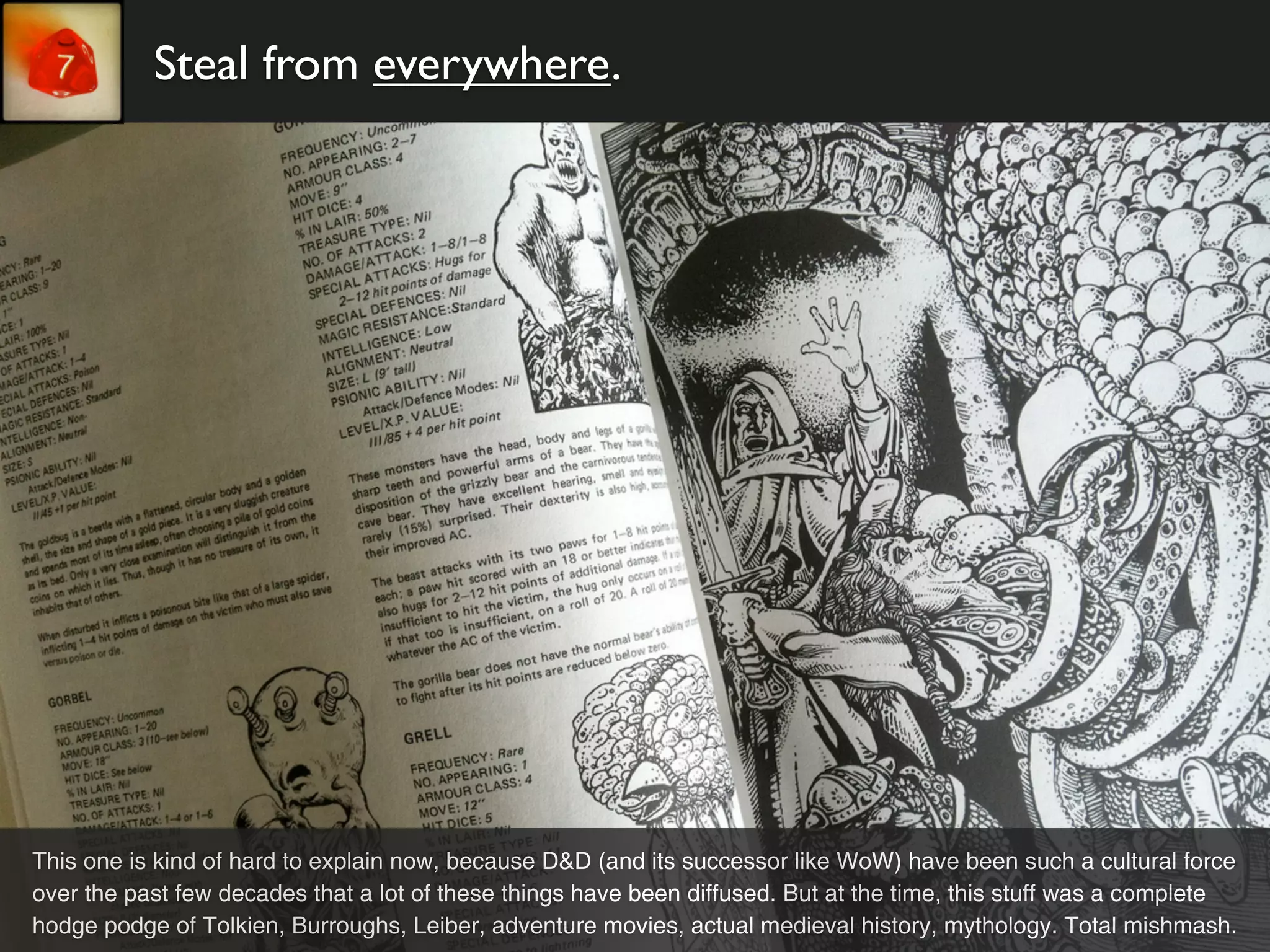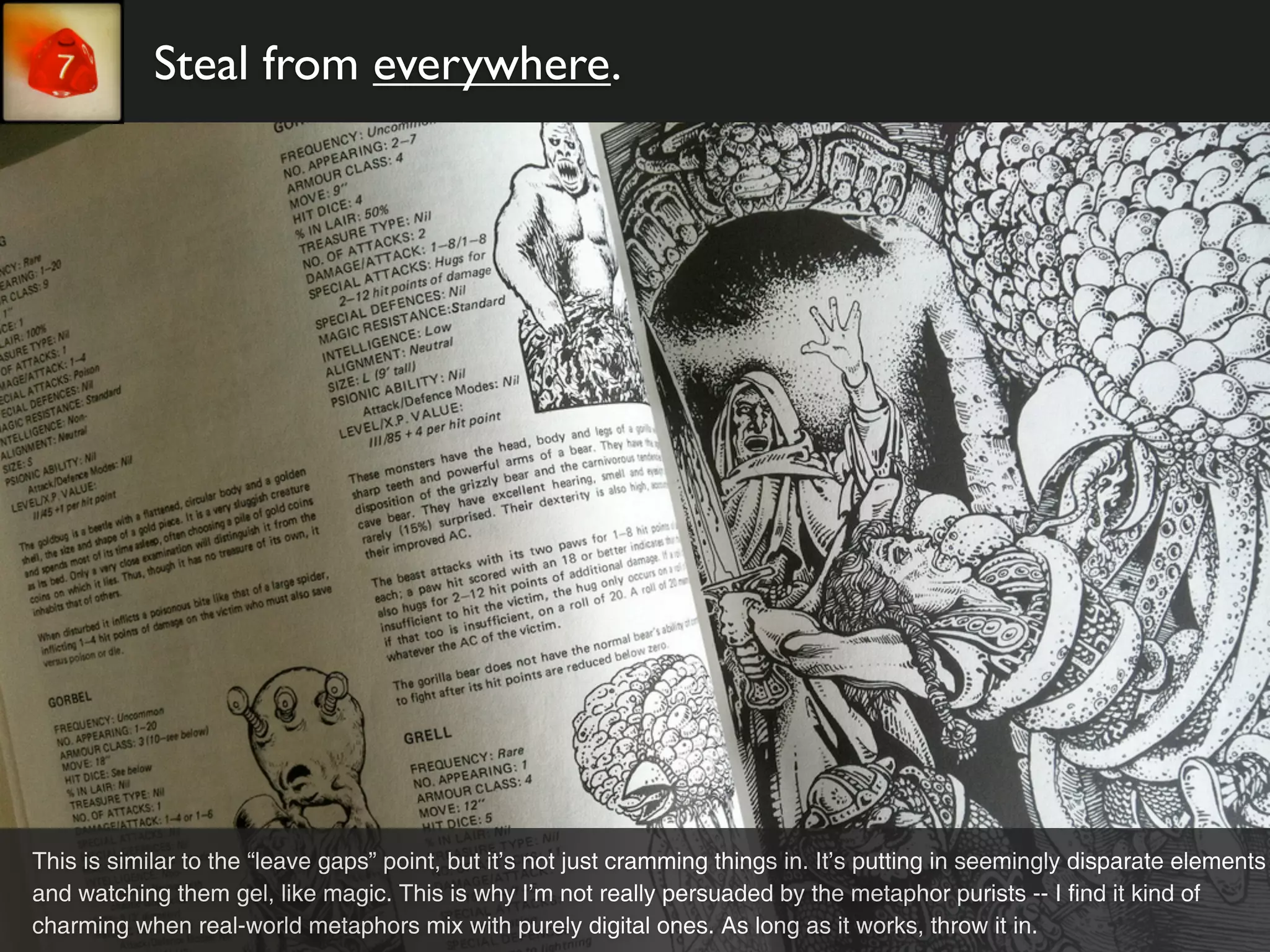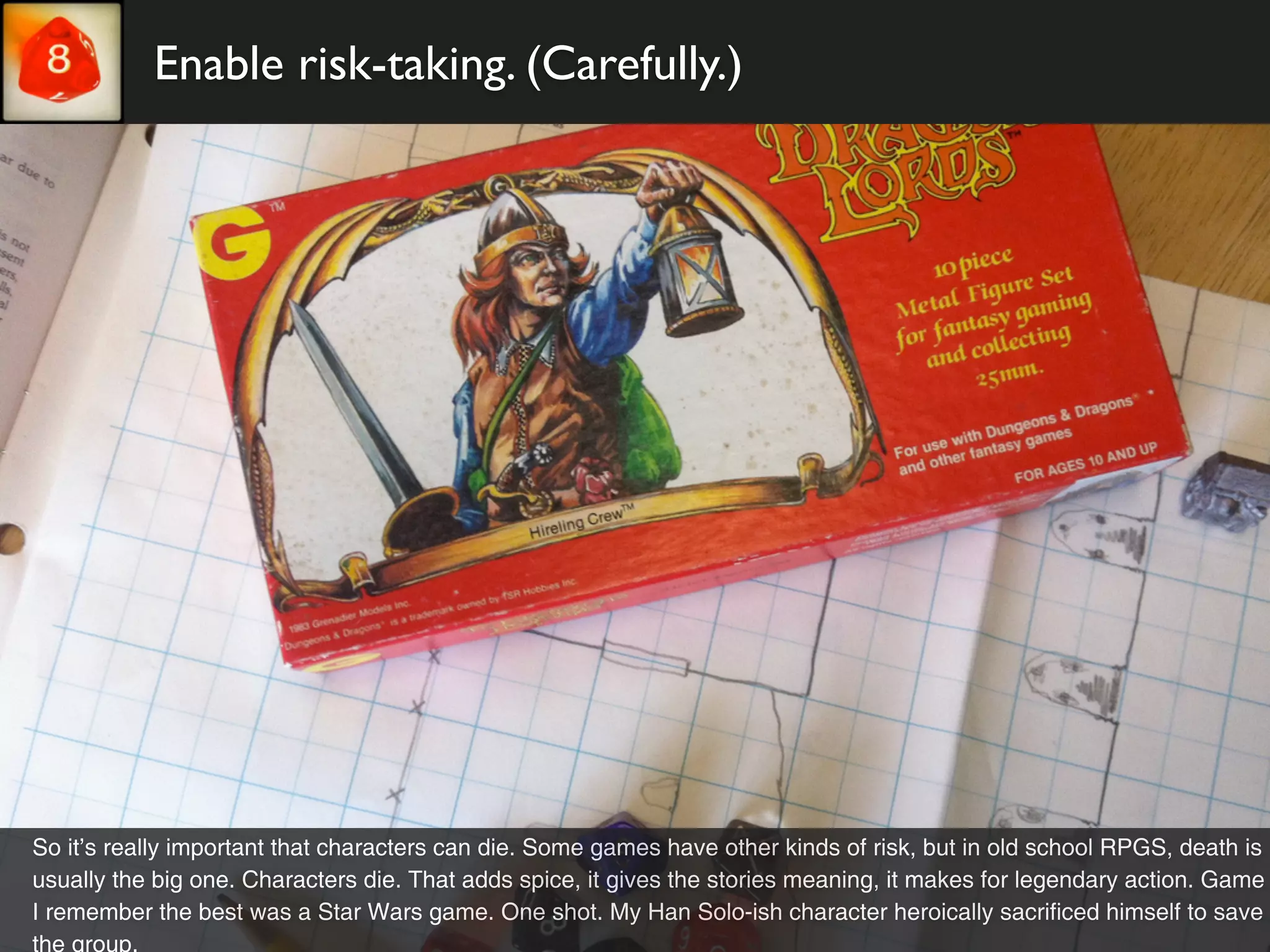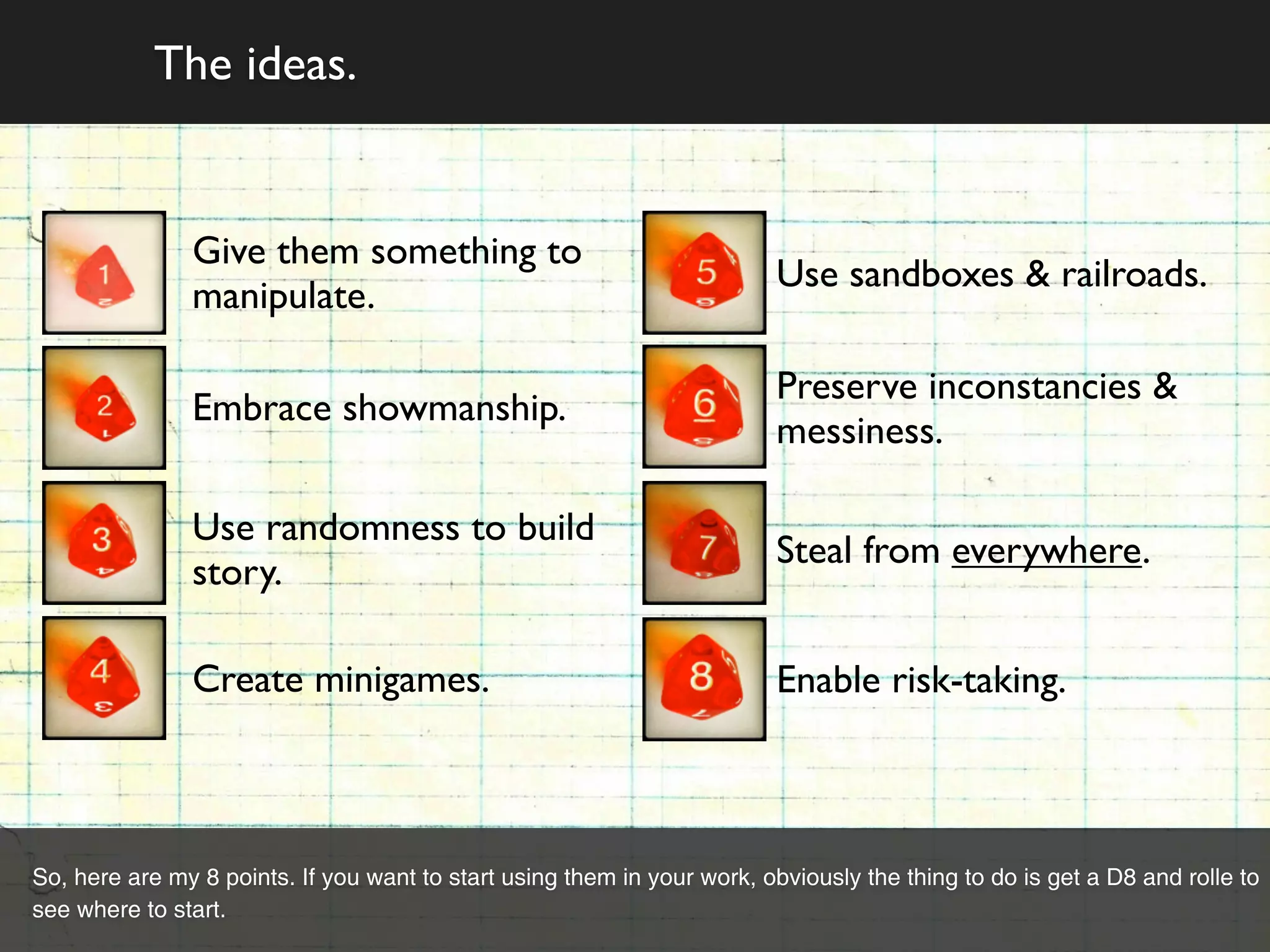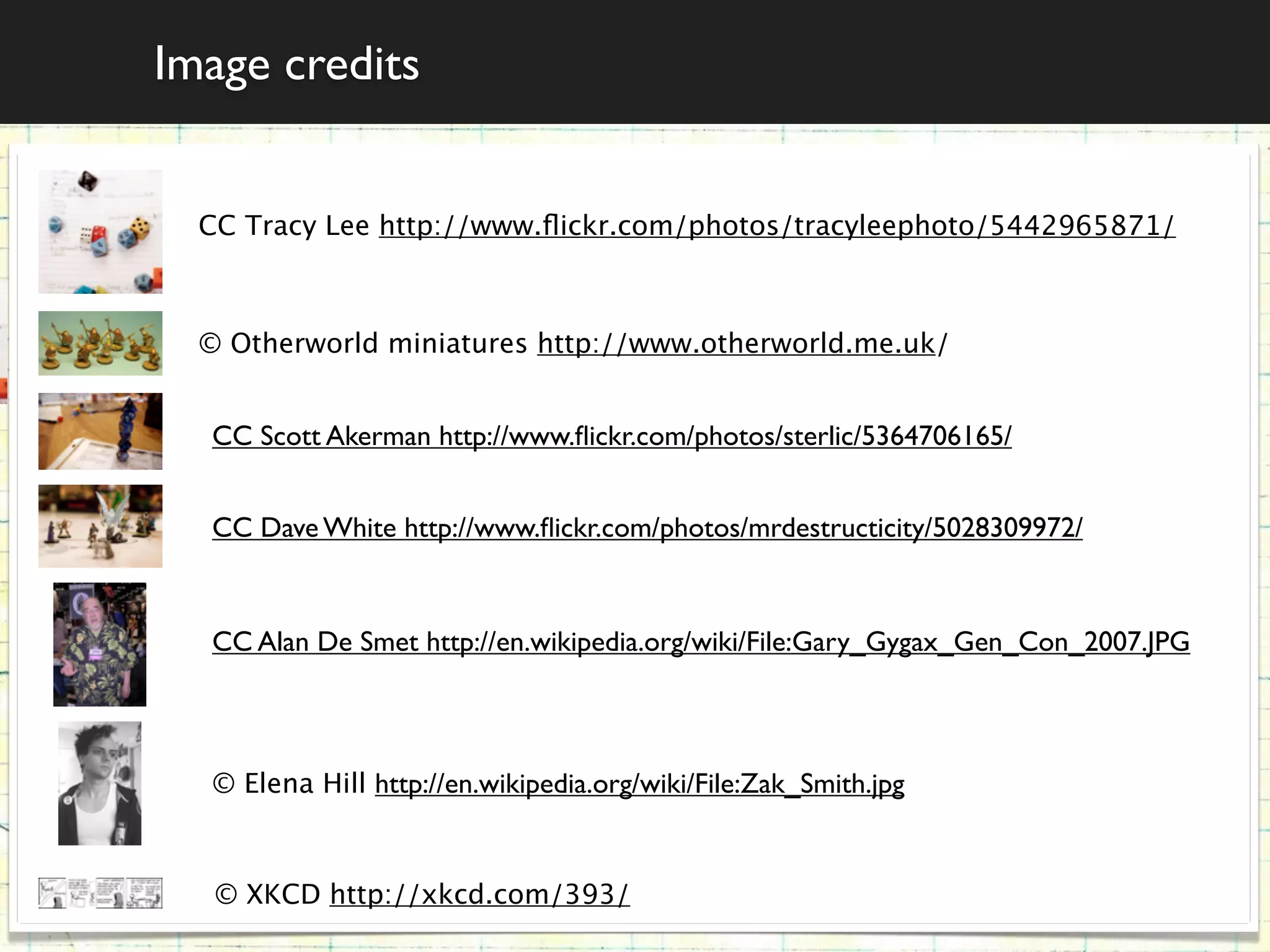The document discusses the design principles derived from old-school role-playing games, particularly Dungeons & Dragons, highlighting eight key ideas: giving players tools to manipulate, embracing showmanship, using randomness to enhance storytelling, creating sub-games or minigames, applying sandbox and railroad concepts in design, preserving inconsistencies, borrowing ideas freely, and enabling calculated risk-taking. The author emphasizes the importance of tactile engagement, narrative tension, and room for creativity in design, all while drawing connections between the mechanics of tabletop RPGs and broader design philosophy. Ultimately, the work seeks to inspire modern designers by revisiting the engaging elements of classic games.
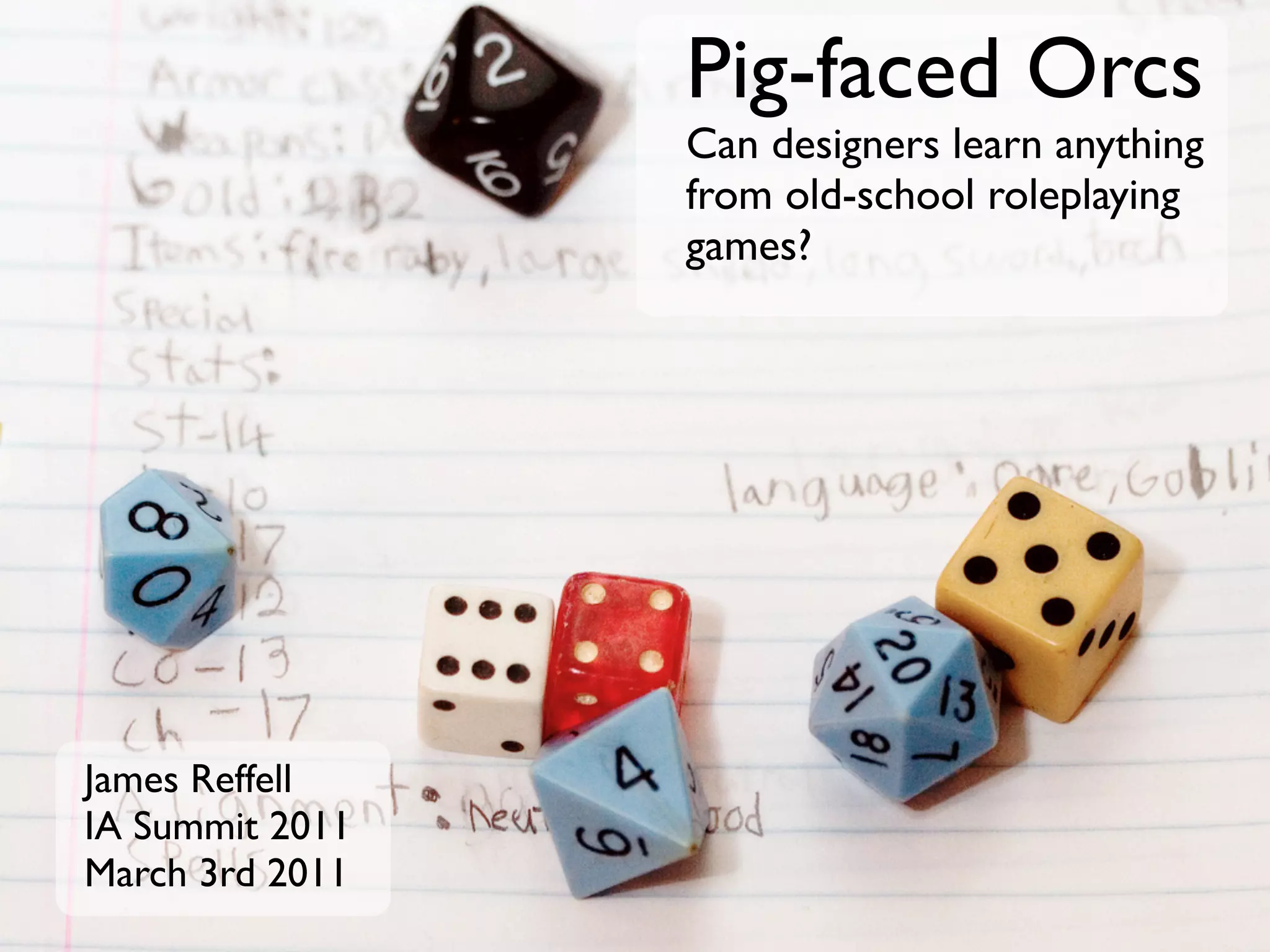
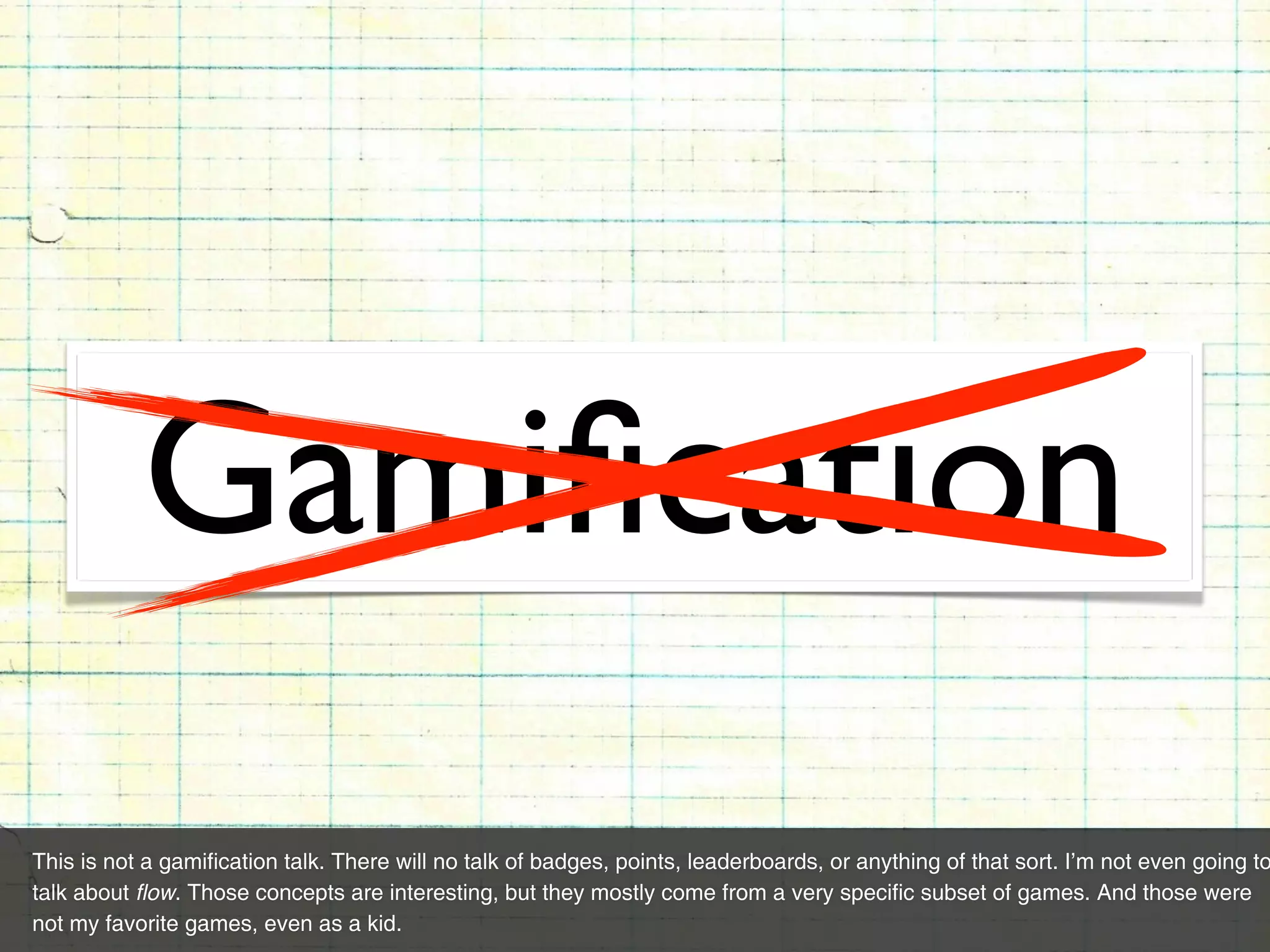
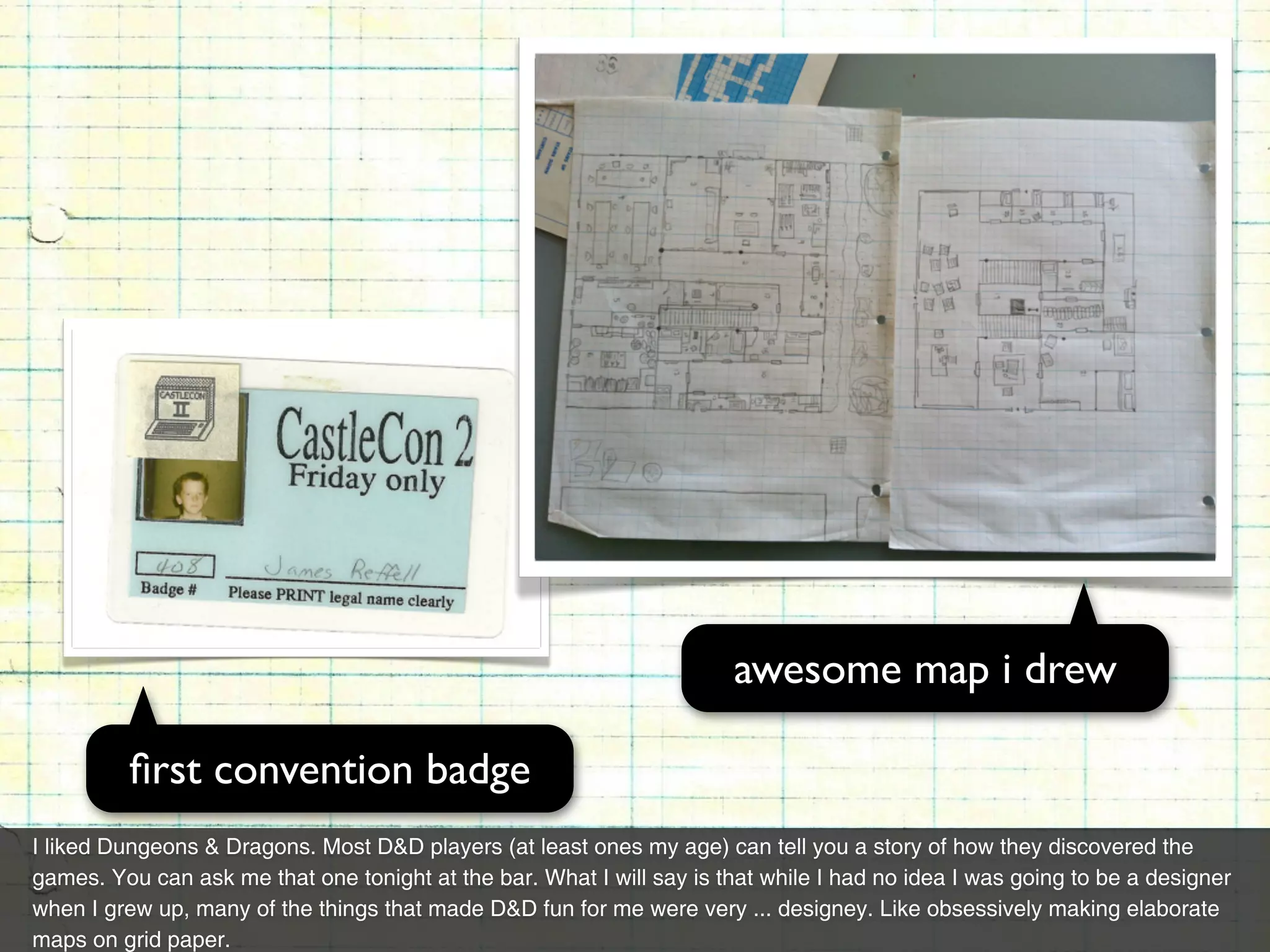
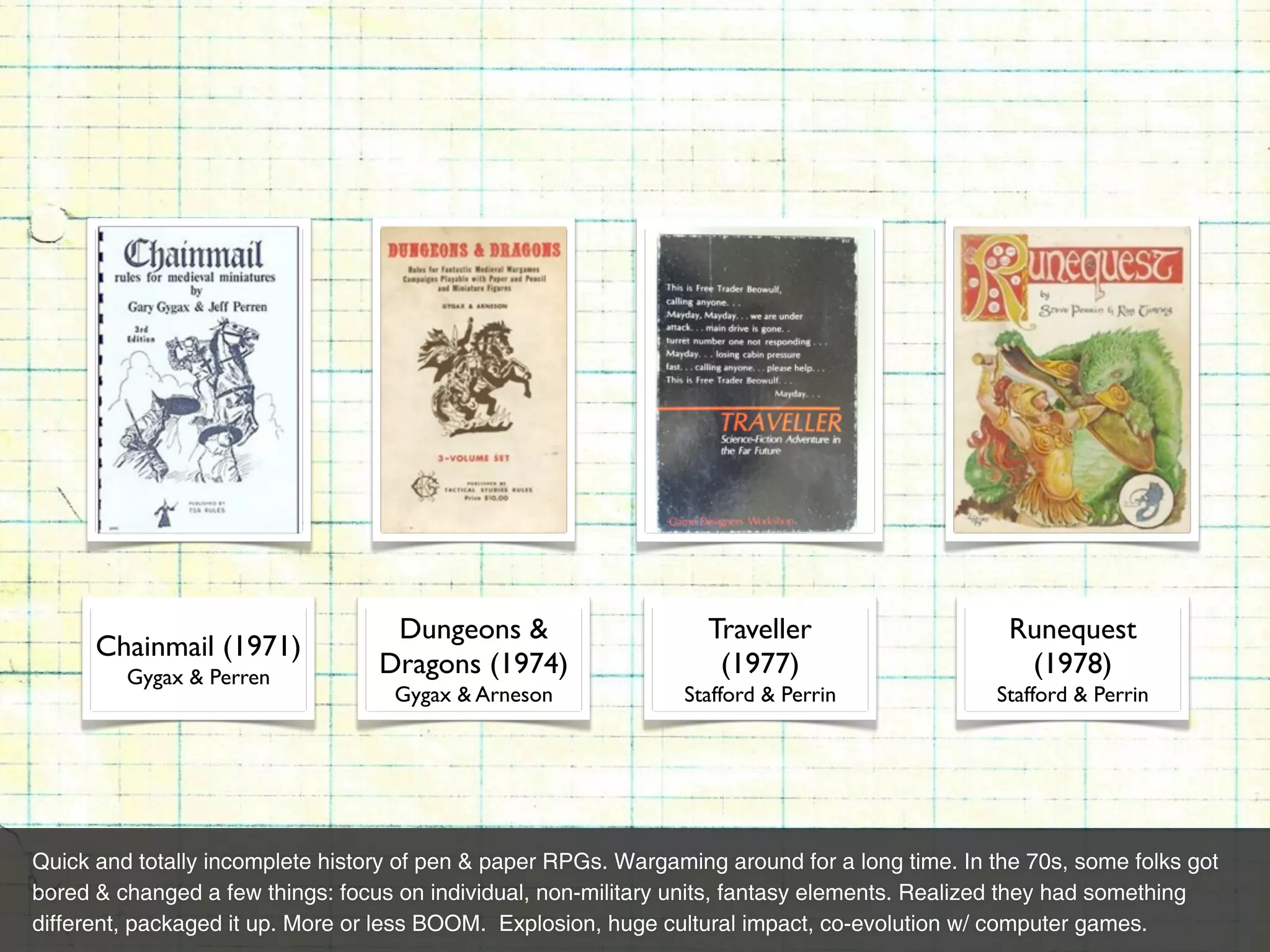
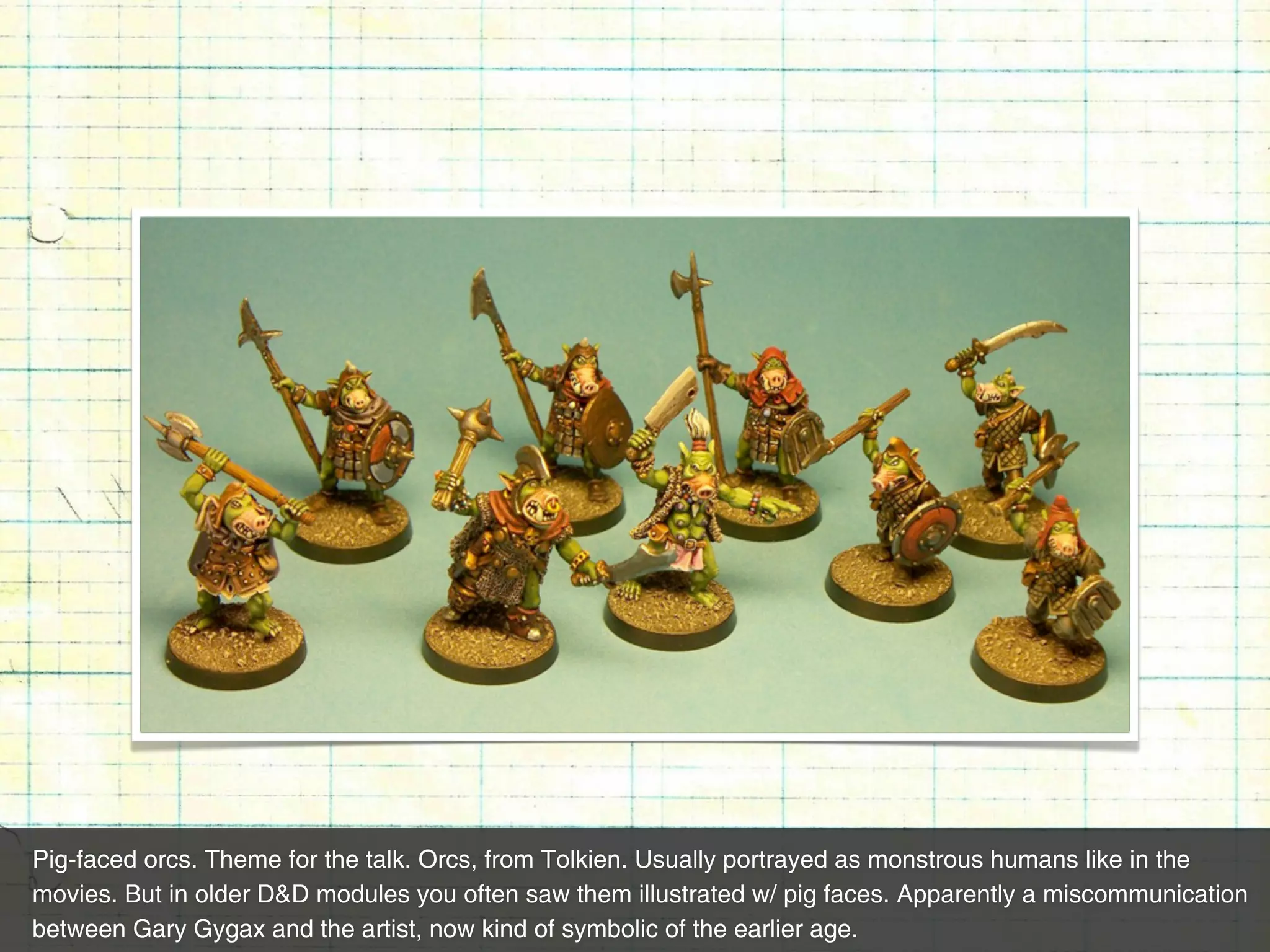
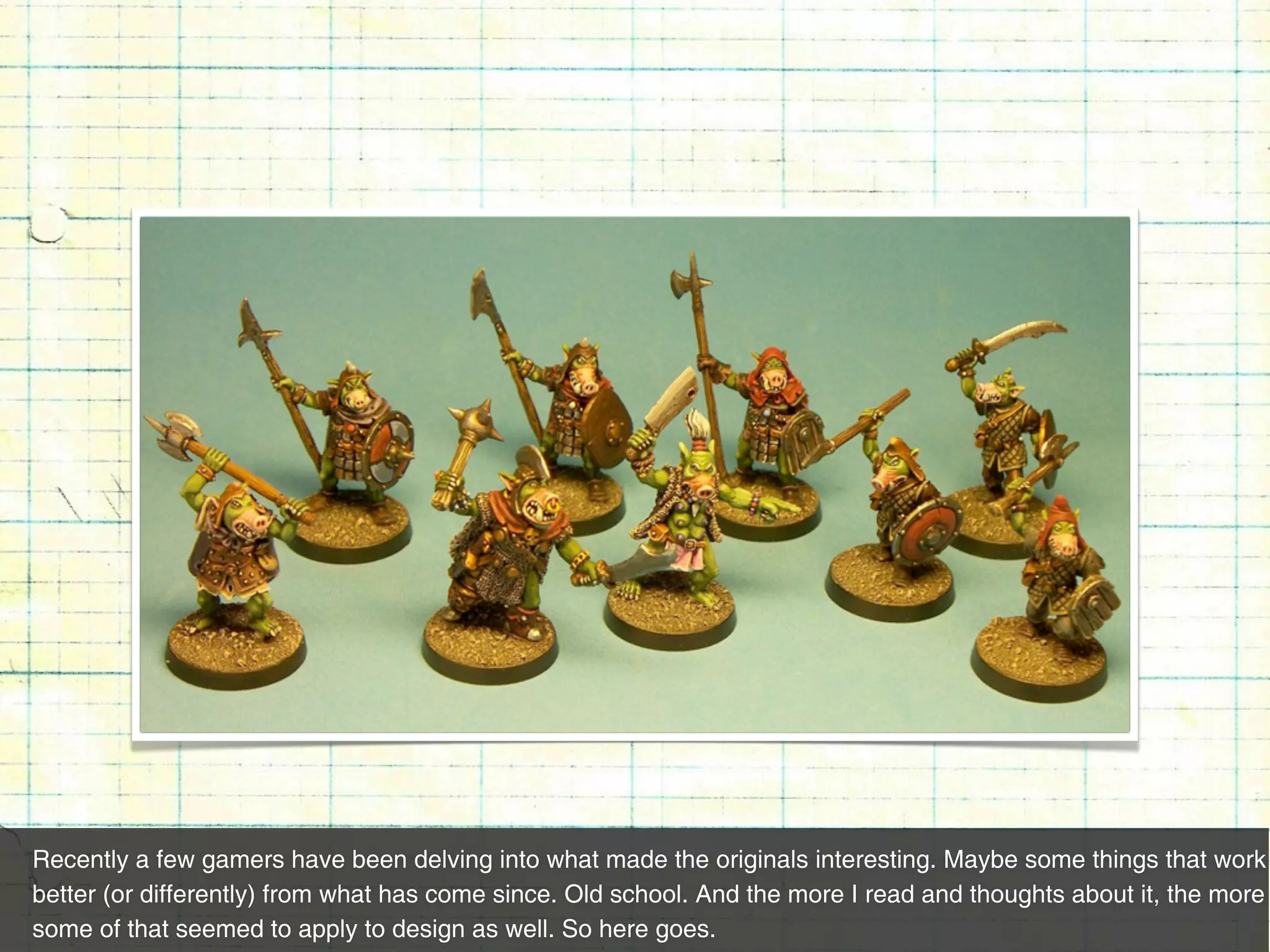
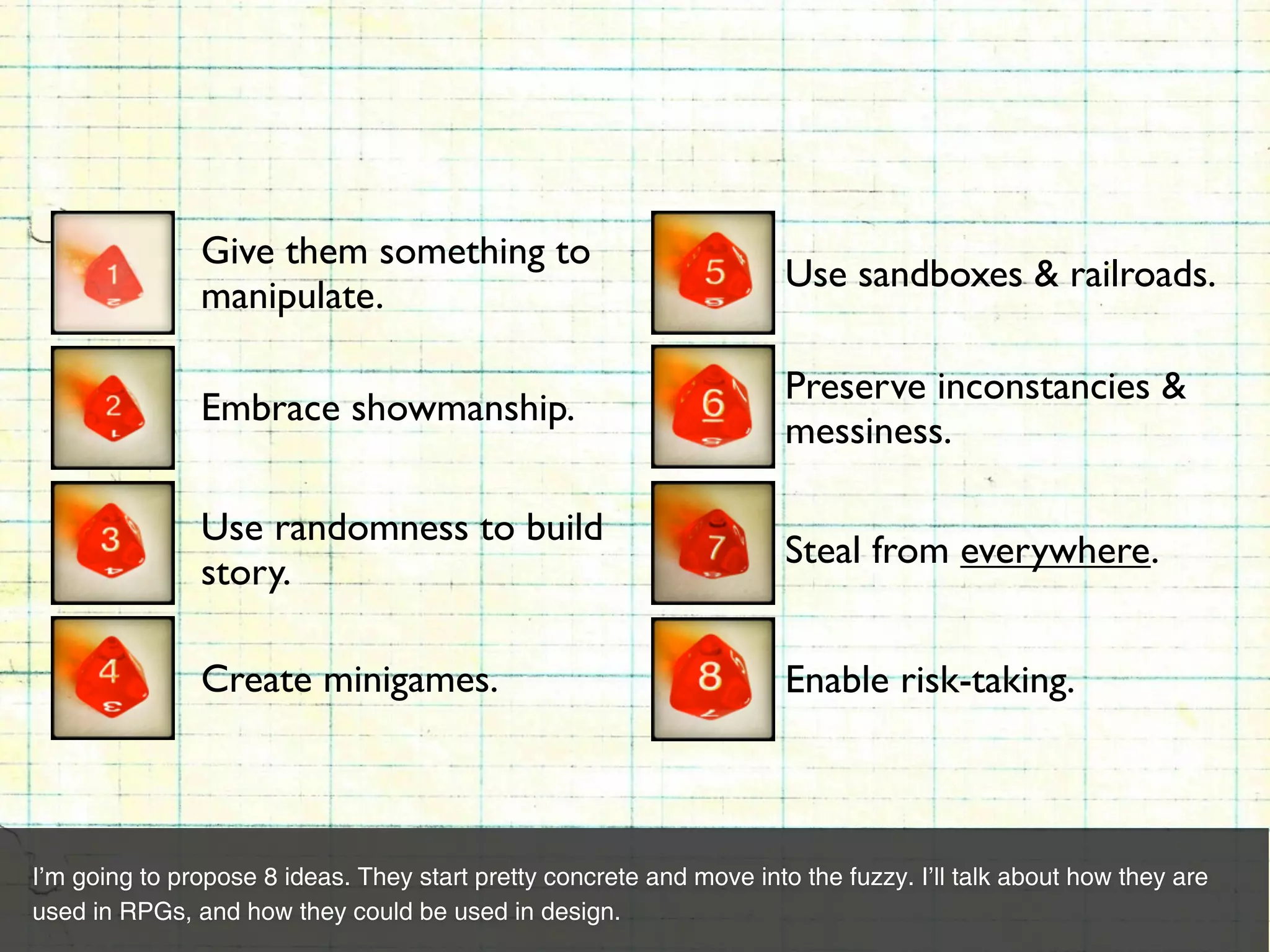


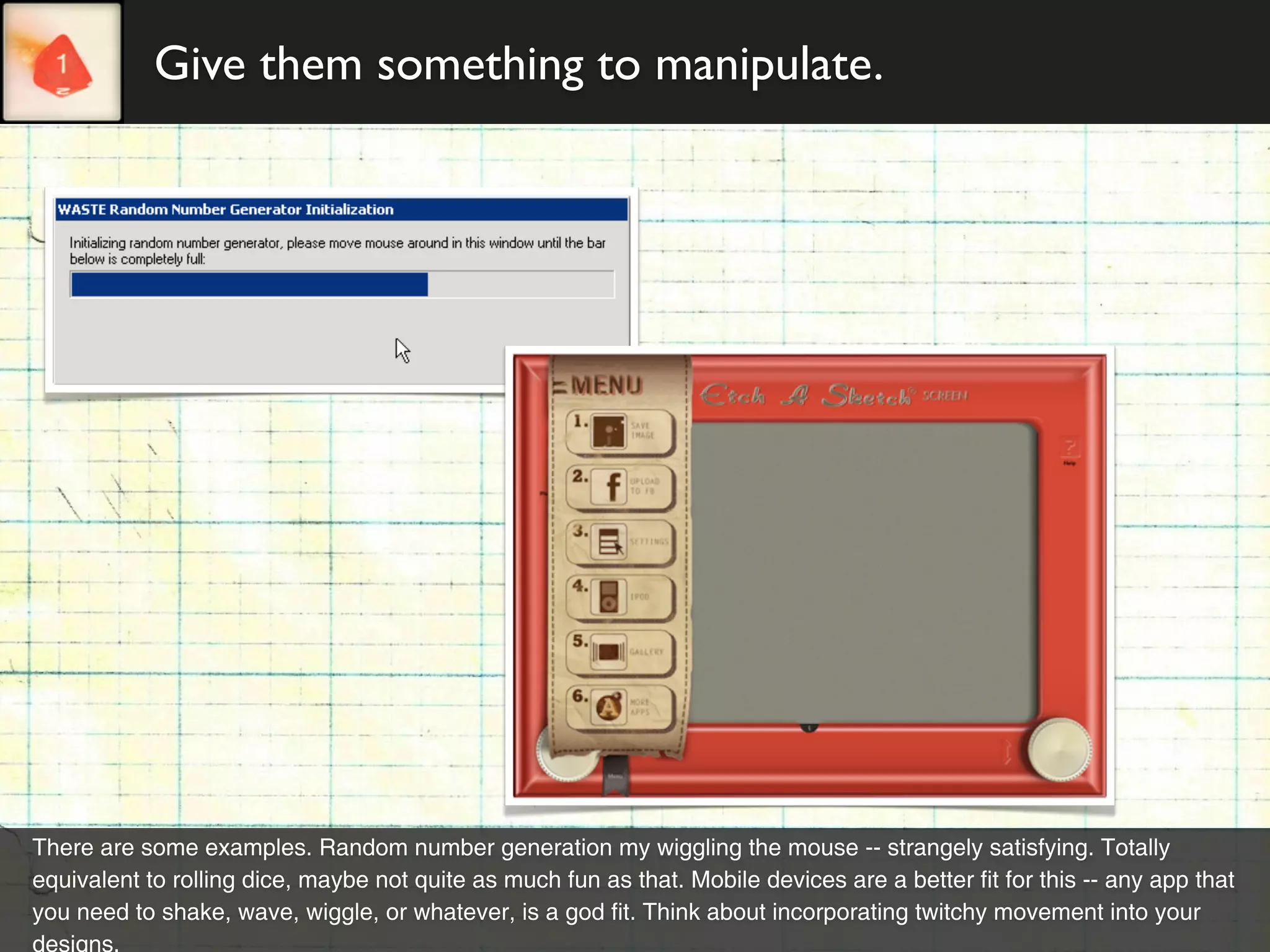
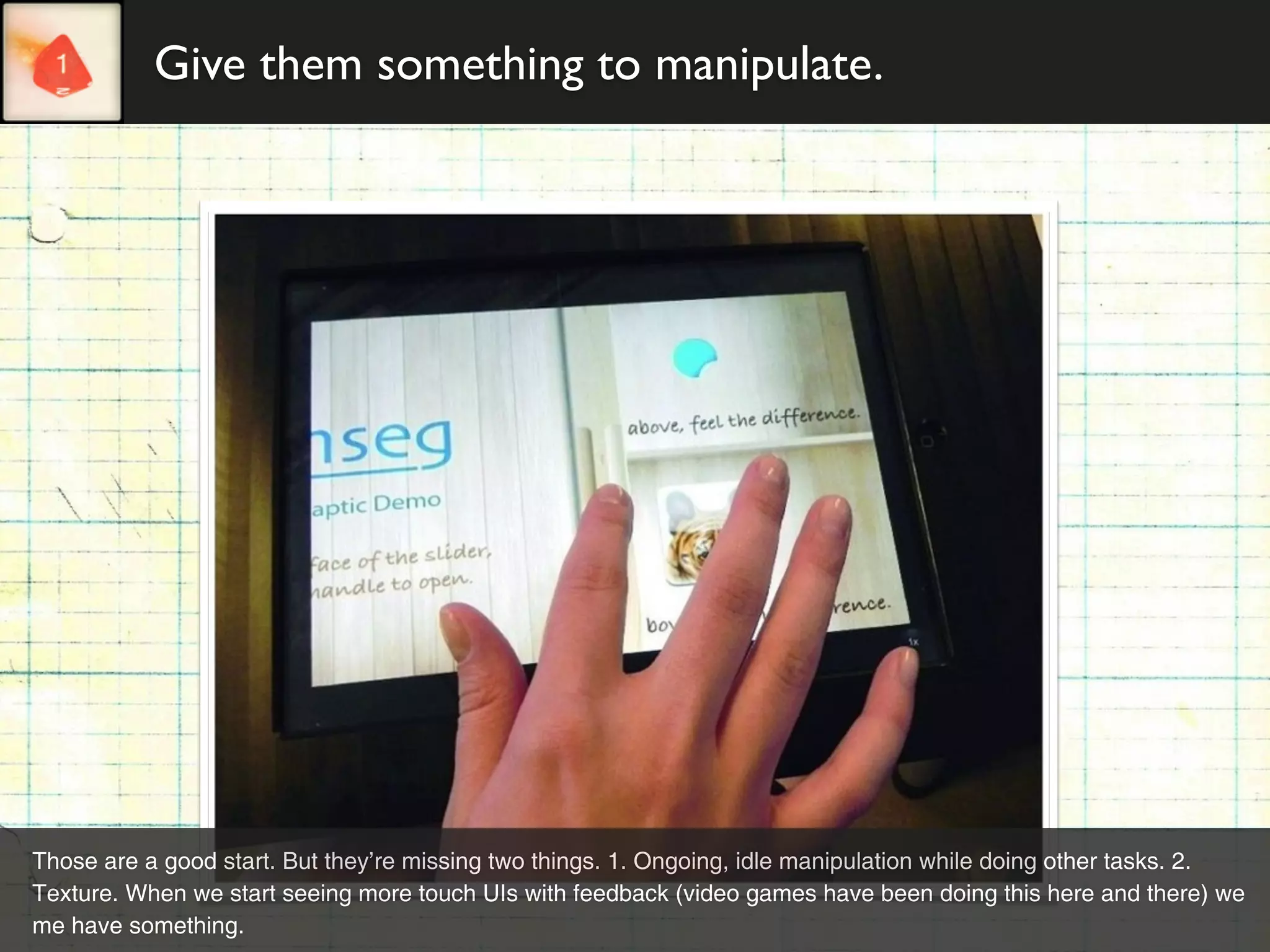
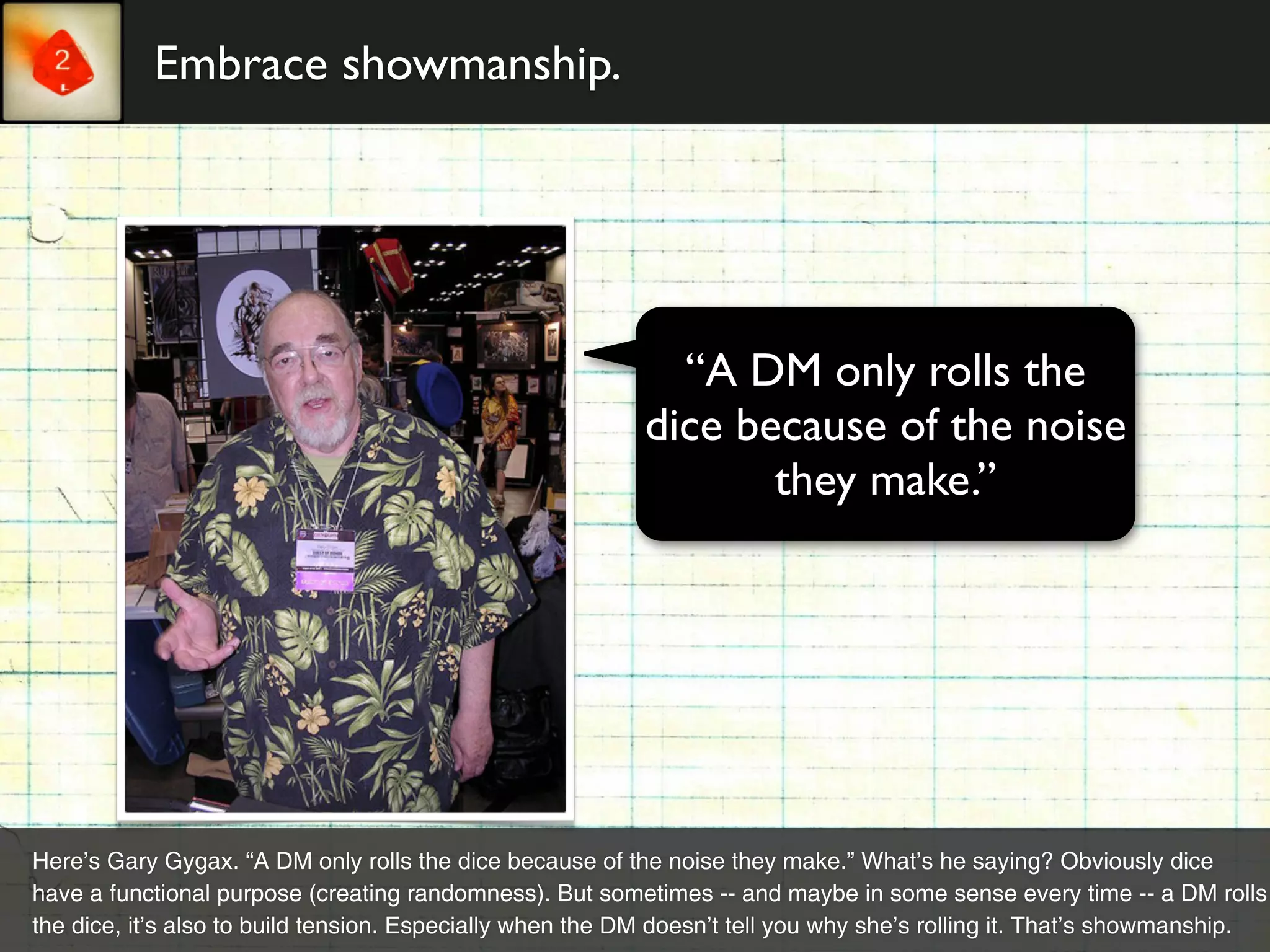
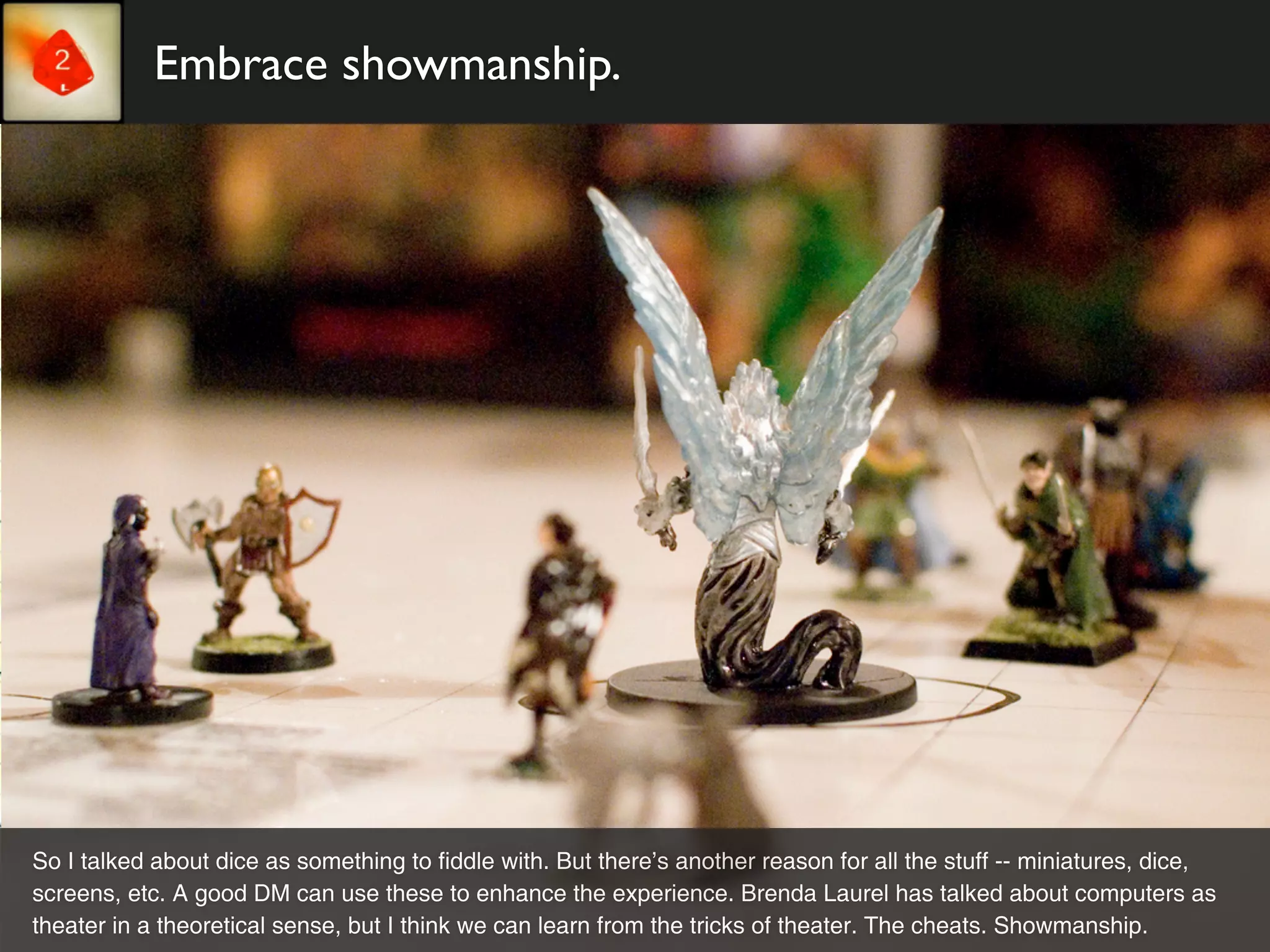
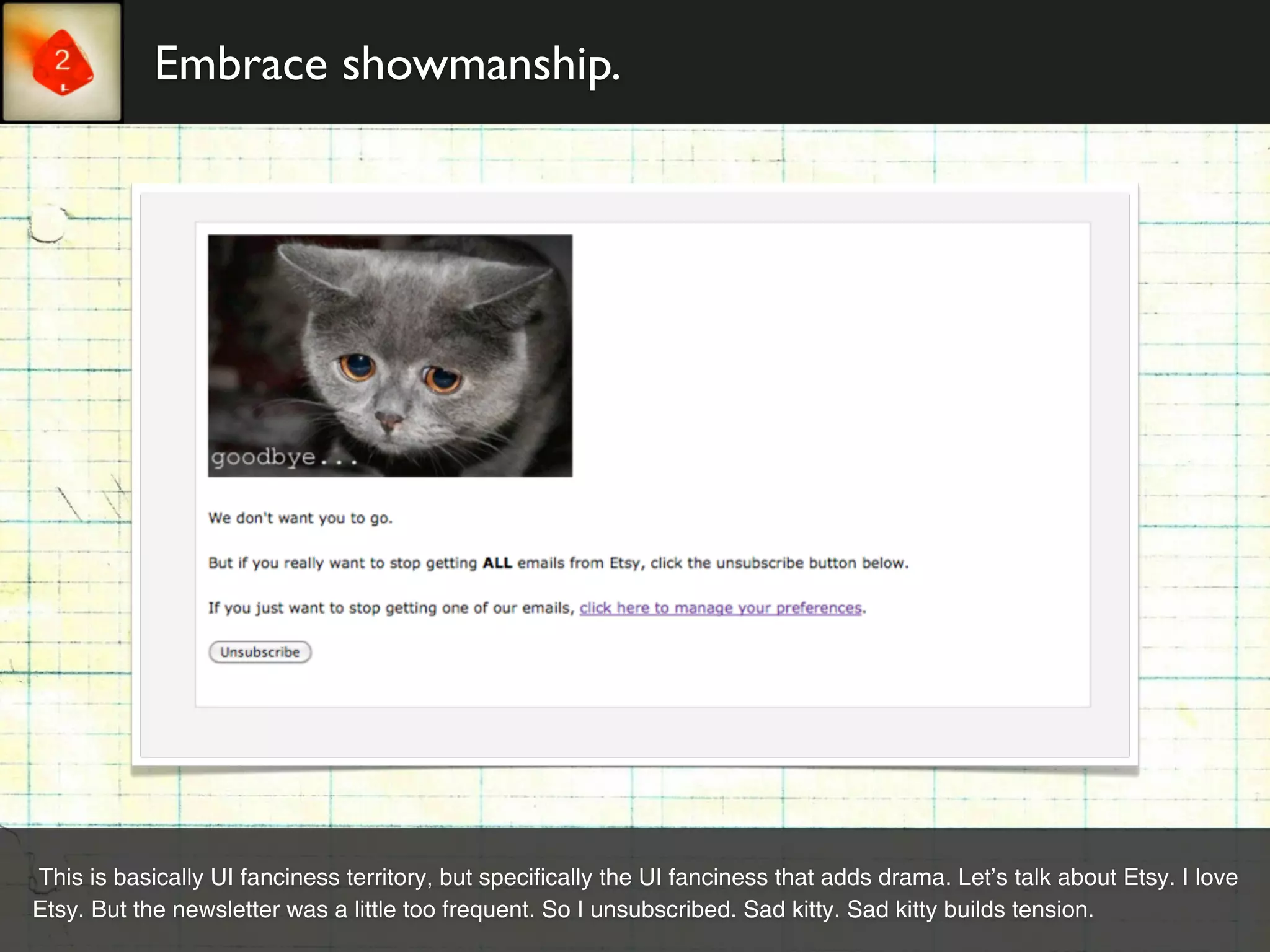
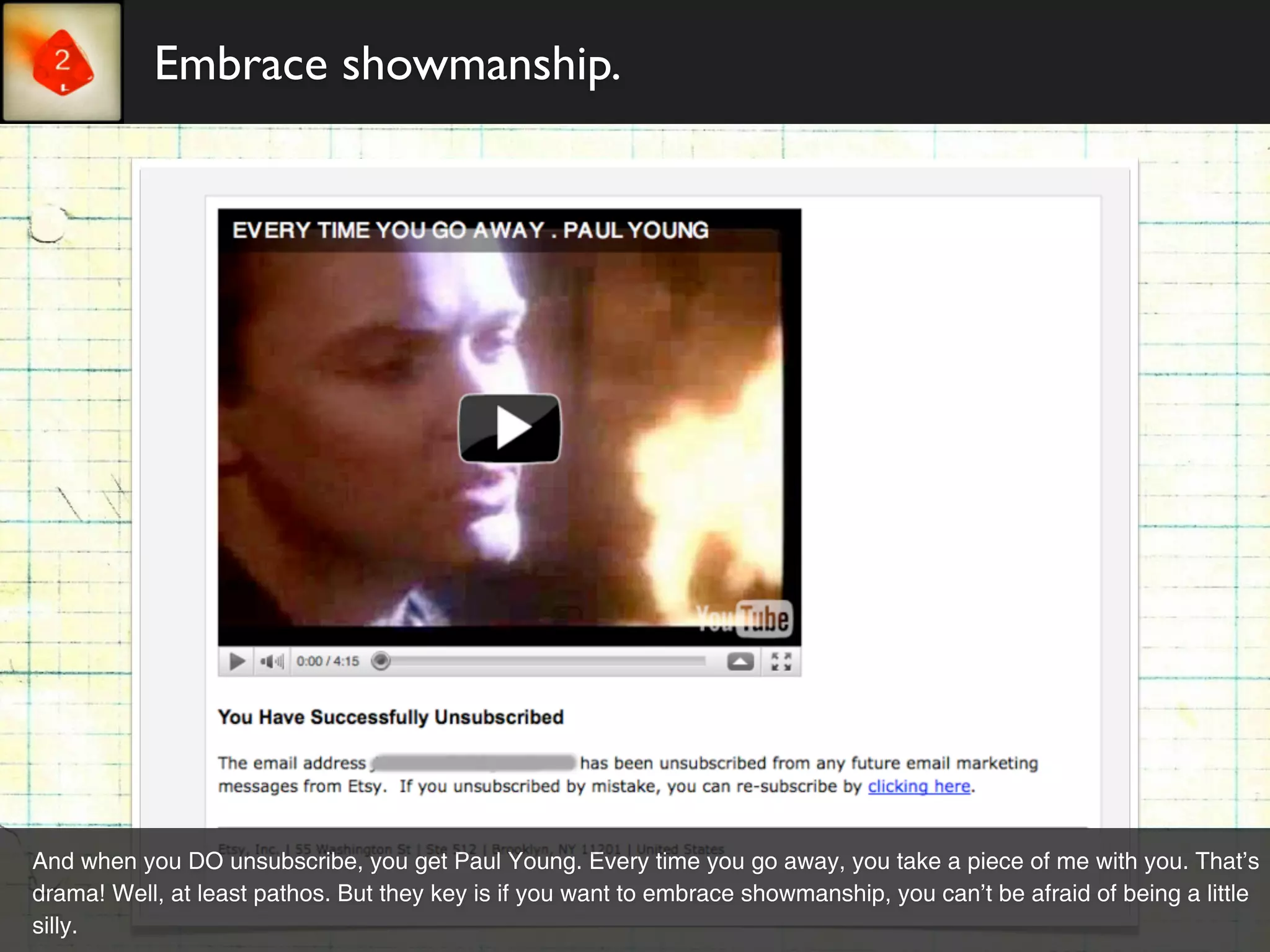
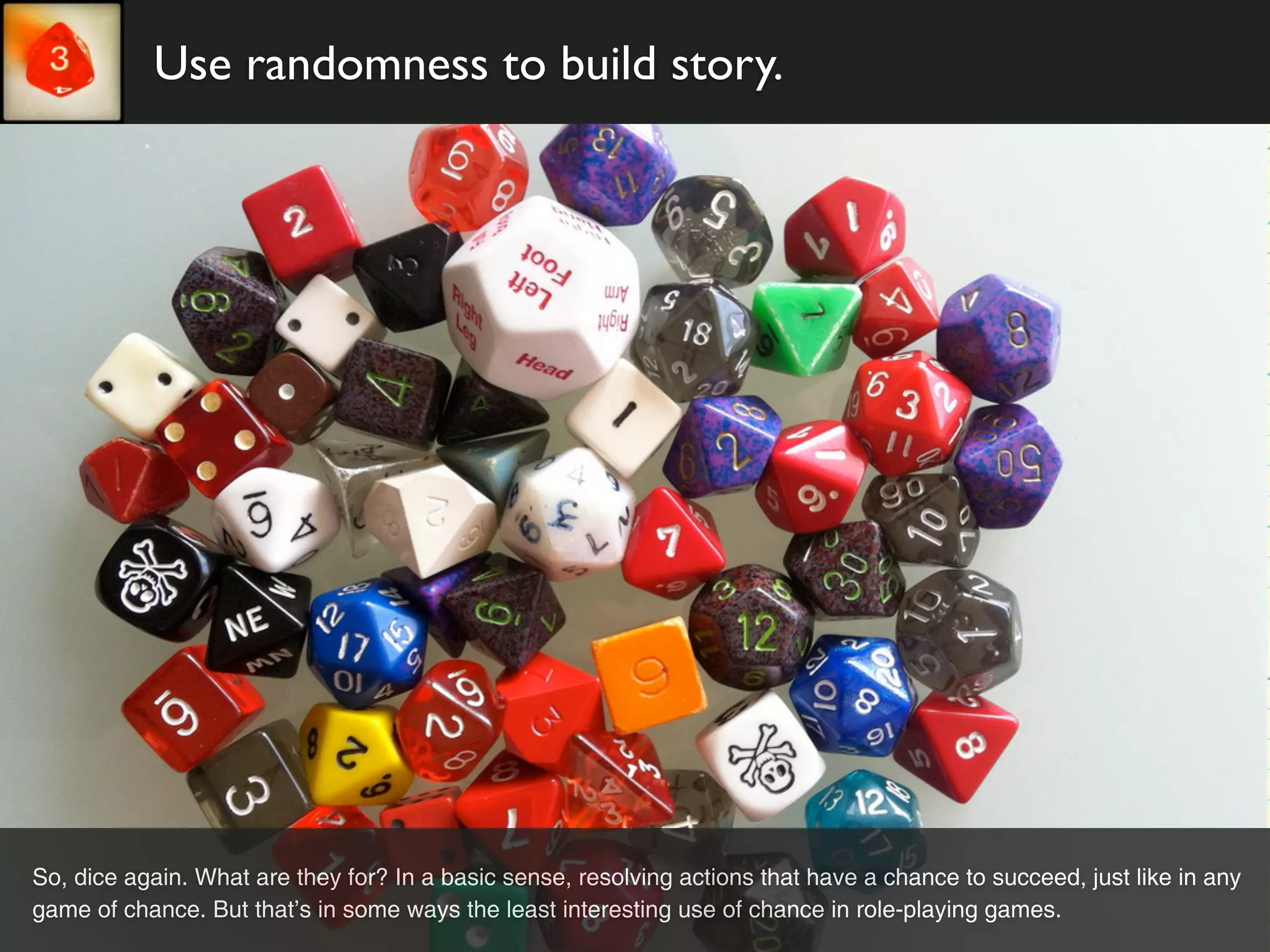
![Use randomness to build story.
This is the famous Harlot Table. [Explain Harlot Table.] So, this is iconic and hilarious, but it’s also representative of a
core concept -- using the dice to generate story. Obviously a story with a brazen strumpet wandering into it will be
different from a story with a aged madam.](https://image.slidesharecdn.com/dndv4-110404181709-phpapp01/75/Pig-faced-Orcs-What-designers-can-learn-from-old-school-role-playing-games-17-2048.jpg)
